The Nissan Patrol has a long and proud history, with production of the first generation of this legendary off-roader kicking off in 1951 – the same year Toyota began producing the LandCruiser.
Called the 4W Series, these early Nissan off-roaders (4W60) looked very similar to a Willys Jeep and were only sold in Japan. This model was updated in 1955 with the introduction of the 4W61, but it wasn’t until the release of the 4W65/4W66 variants in 1958 that the vehicle first wore Patrol badges on its bonnet.
A year later, the 3956cc Nissan P engine was introduced. This donk would eventually power the 4W’s successor, the 60 Series, which would be the first Patrol officially sold in Australia.
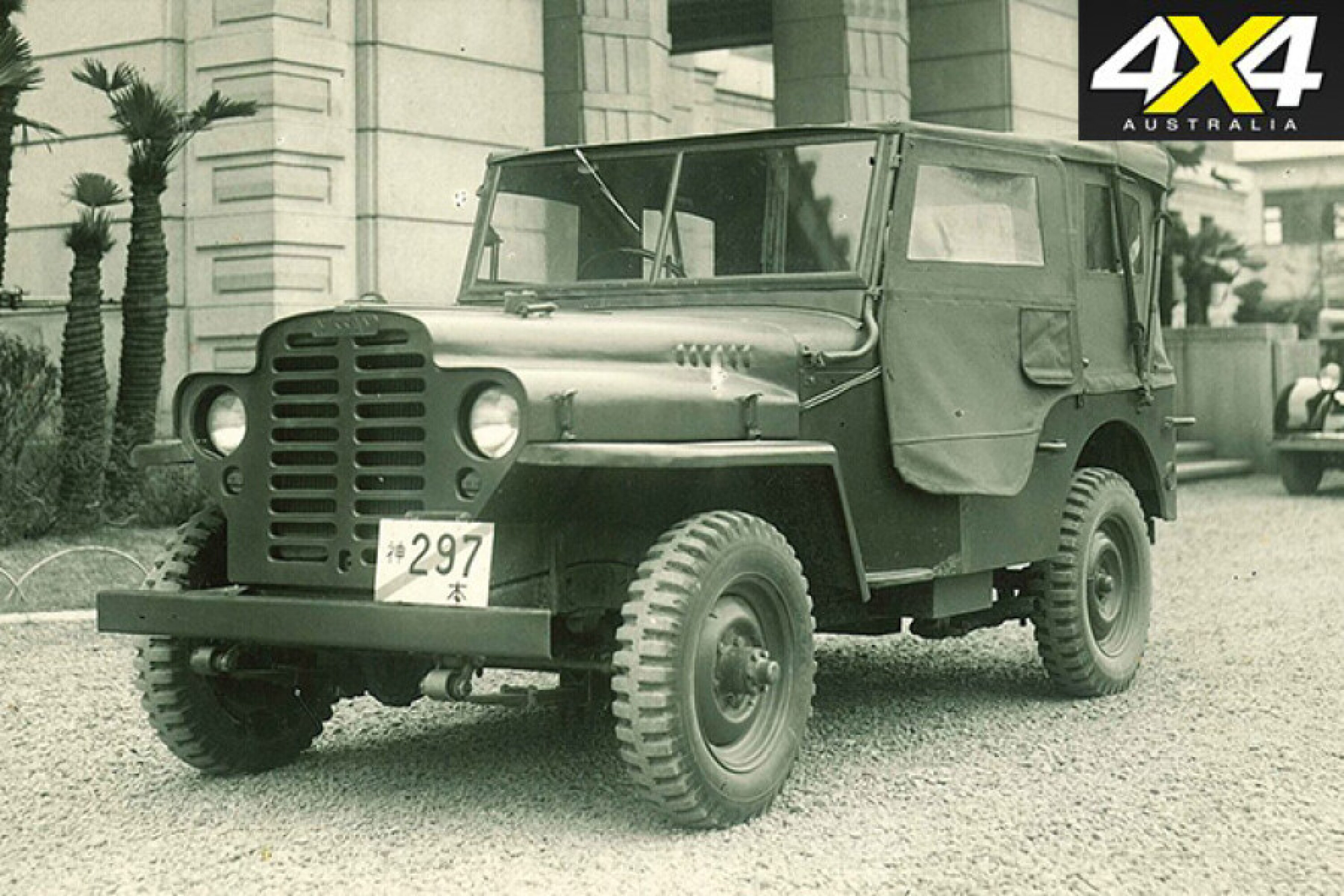
JUMP AHEAD
60 Series
Nissan began exporting the Patrol in the early 1960s. The first model to make it down under was the 60 Series, which was powered by the aforementioned 4.0-litre six-cylinder P engine.
With a separate chassis and relatively basic leaf-spring suspension, the 60 Series was sold in Australia in a number of variants, including the short-wheelbase soft-top 60, the K60 hardtop, and the long-wheelbase G60 in wagon and pick-up body styles. Early examples of the 60 had a three-speed manual transmission and a two-speed transfer case; a four-speed manual was eventually introduced.
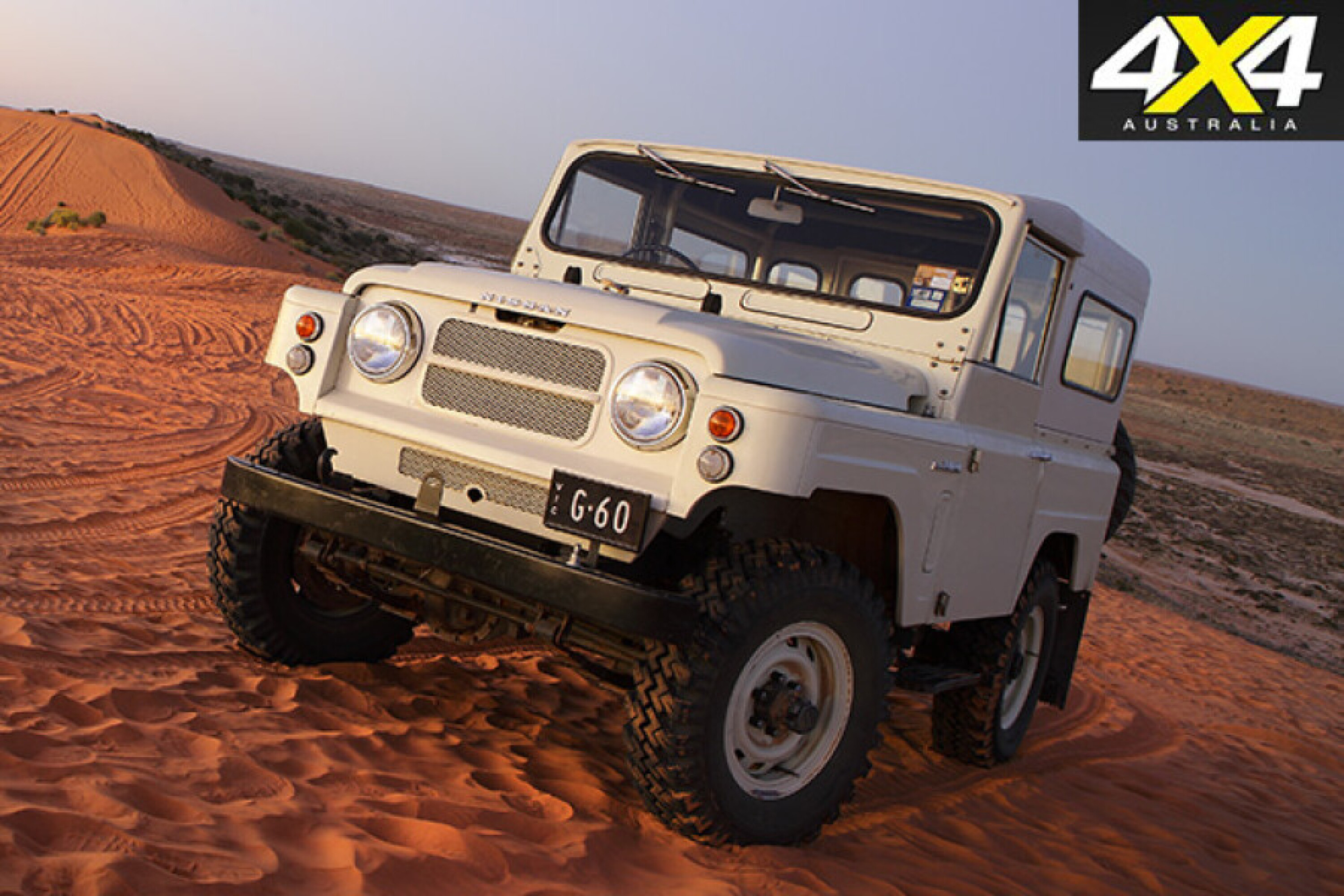
In 2012, Nissan celebrated the 50th anniversary of what it claimed to be the first vehicular crossing of the Simpson Desert. The vehicle used in that 1962 crossing was a G60 Patrol, and it was piloted by famous geologist and founder of South Australia’s Arkaroola Wilderness Sanctuary, Reg Sprigg. Sprigg was accompanied on the journey by his wife Griselda and their children Doug and Marge.
The 60 Series Patrol would see active duty for an impressive 20 years, and over that time it changed little, other than minor updates to some body components and the engine. By the time it was replaced by the MQ Patrol in September 1980, the 60 had certainly reached its use-by date.
MQ Patrol
When the MQ Patrol (160 Series) was introduced to replace the 60 Series in 1980, the worldwide four-wheel drive market was rapidly evolving.
While still based on a relatively basic platform (separate chassis and live-axle, leaf-spring suspension), the MQ Patrol had a more modern body style, was available in bright colours with ‘loud’ graphics, offered a choice of petrol and diesel six-cylinder engines and included short-wheelbase and long-wheelbase models in the line-up, along with a variety of body styles (SWB hardtop, pick-up, cab-chassis and wagon).
Driveline variants included a 3.3-litre diesel engine and 2.8- and 4.0-litre petrol engines. Initially a four-speed manual gearbox was the only option, but by the end of 1981 buyers of the deluxe seven-seat wagon could opt for a three-speed automatic transmission. A new limited-slip rear differential was also introduced.
A facelift of the MQ Patrol was launched in 1983, which featured upgraded front suspension and stylish-for-the-time rectangular headlights.
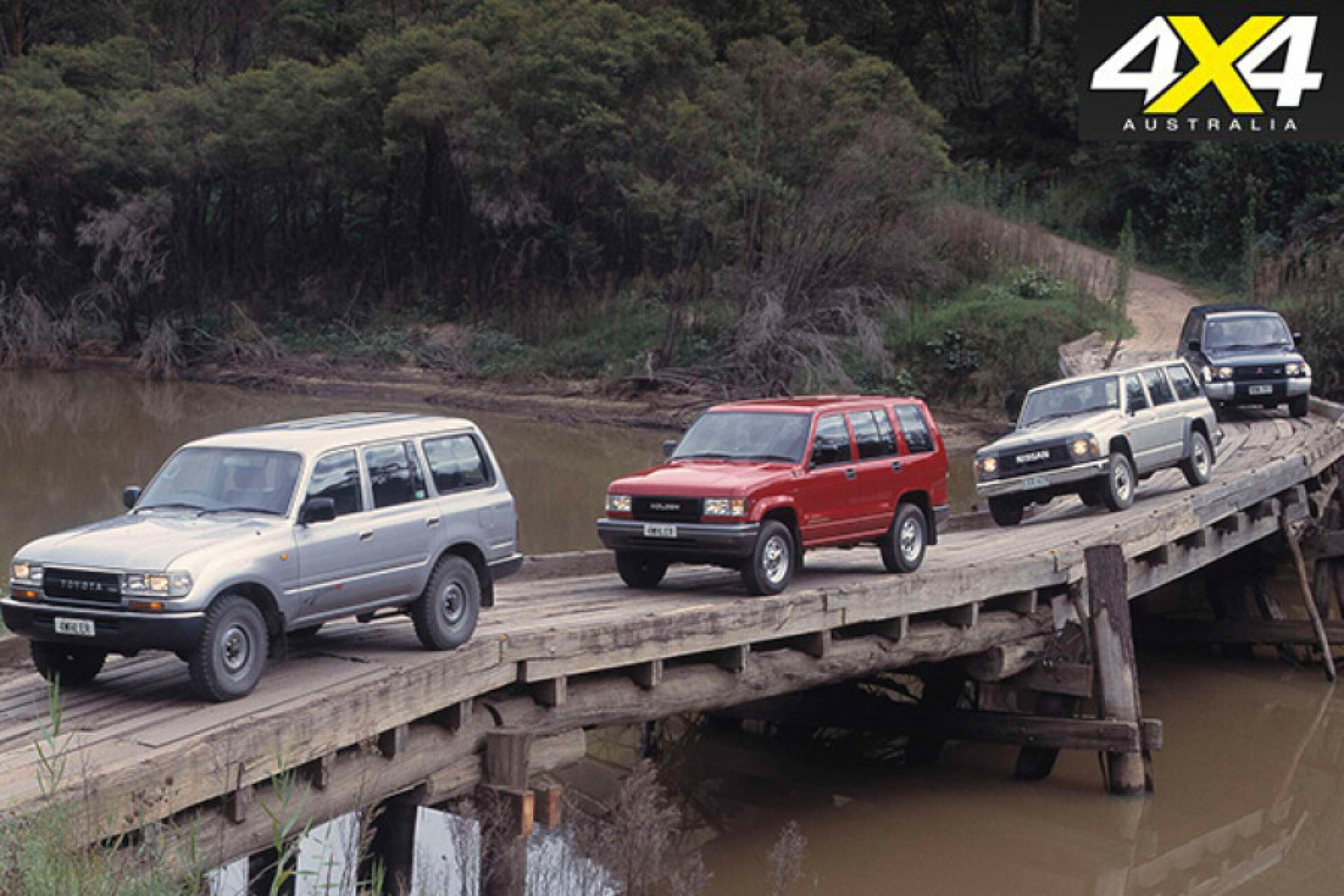
Importantly, the MQ also scored a five-speed manual transmission, while the 24-volt electrical system employed on the SD33 diesel engine version was flicked in favour of a more traditional (and therefore more compatible with most accessories) 12-volt electrical system.
A turbocharged version of the SD33 was introduced, making a claimed 81kW and 255Nm, and owners of this model didn’t go unnoticed thanks to the massive ‘TURBO’ stickers on the rear panels of the Patrol.
Nissan had a strong Patrol line-up in the MQ, with more than 20 variants on offer towards the end of its lifespan
With its choice of bright colours, modern styling, optional fancy white Sunraysia-style rims and relatively high equipment levels (AM/FM radio cassette, digital clock, optional air-conditioning, comprehensive instrument panel), higher-spec versions of the Patrol became popular with recreational four-wheel drivers, in both short-wheelbase hardtop and long-wheelbase wagon variants. However, base-spec models and pick-up/cab-chassis models still appealed to rural/business buyers.
There were further updates to the MQ Patrol in 1986, with a more powerful 4.0-litre petrol six and the five-speed gearbox becoming standard across the range, along with standard power steering.
Nissan had a strong Patrol line-up in the MQ, with more than 20 variants on offer towards the end of its lifespan, and with relatively keen pricing, it could take the fight to Toyota’s 40 and 60 Series LandCruisers. However, the big news for Patrol was still a year away.
GQ Patrol
Until the launch of the GQ Patrol (Y60) in late 1987, Nissan always played second fiddle to Toyota, which had its hugely popular LandCruiser spearheading its four-wheel drive line-up.
But Nissan got the hop on Toyota when the all-coil-spring GQ Patrol landed locally, and it sold like hotcakes compared to the now-outdated leaf-spring 60 Series LandCruiser. Nissan held on to this technical (and therefore sales) advantage until 1990, when Toyota finally rushed the 80 Series to market.
There were some carry-over body parts from the MQ, but the new GQ Patrol was light years ahead of its predecessor (and competition) in terms of styling, ride quality and refinement.
Its long-travel, coil-spring suspension offered a blend of on-road comfort and off-road performance that couldn’t be matched – at least without taking out a second mortgage and buying a Range Rover.
There were two engine options in the GQ Patrol line-up: the 4.2-litre OHV TB42 petrol six (125kW/325Nm), and the 4.2-litre OHV TD42 diesel six (85kW/264Nm)
Up front, the GQ Patrol sported a three-link, live-axle, coil-spring arrangement, while the rear was a five-link design (the cab-chassis variant was initially offered with only a leaf-spring rear-end). Sway bars were fitted at both ends and some models featured rear sway bar disconnects for increased wheel travel in off-road situations.
Initially there were two engine options in the GQ Patrol line-up: the 4.2-litre OHV TB42 petrol six (125kW/325Nm), and the 4.2-litre OHV TD42 diesel six (85kW/264Nm). Both engines were mated to a heavy-duty, five-speed manual or a four-speed auto transmission, and power was directed through a two-speed transfer case and part-time 4WD system.
A limited-slip rear diff was standard, or a rear diff lock could be selected as an optional extra on some models. All wagons featured four-wheel disc brakes, while the cab-chassis retained drums at the rear.
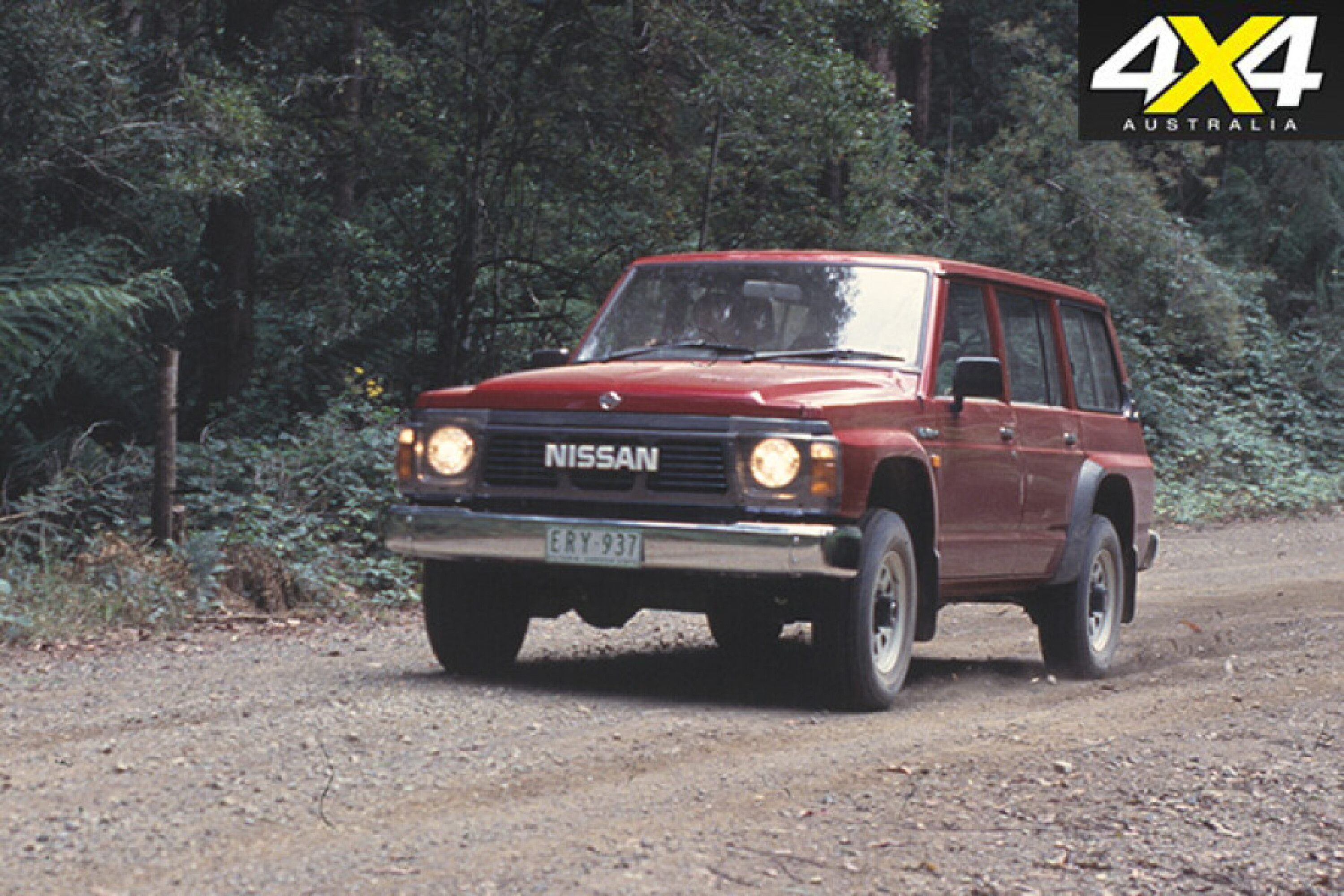
There were a variety of trim levels on offer, starting with the base-spec DX, which had vinyl trim, manually operated windows and mirrors, manual free-wheeling hubs and optional air conditioning. The ST added cloth trim, power windows and mirrors, central locking, standard air conditioning and auto hubs (with manual override).
A high-roof Ti model was added in 1989, which scored velour trim, carpet, rear air conditioning, upgraded sound system and alloy wheels. The high-roof (called the Safari Roof) was flicked in 1991, although the Ti model was retained in the line-up, albeit with standard roof height.
Nissan added a third engine to the Patrol wagon line-up in 1990: the 3.0-litre RB30 petrol six (100kW/224Nm). This was the same engine used in the Nissan Skyline and Holden VL Commodore and, while not ideally suited for use in a big, heavy 4WD like the Patrol, it proved popular thanks to keen pricing. This engine was only offered with a five-speed manual transmission in seven-seat ST spec, which was later renamed ST3.
In 1994, a coil cab version of the GQ Patrol was added to the Nissan line-up
The Patrol was updated in 1992, when the GQ Series II was launched. Among other refinements, the 4.2-litre petrol engine gained the benefit of electronic fuel injection (EFI), which improved refinement but did little for the engine’s thirsty nature. Other updates included the addition of side-intrusion beams in the doors, tweaks to suspension and transmission, bigger brakes and changes to the standard equipment list.
From 1989 to 1994, Ford Australia sold a rebadged version of the GQ Patrol called the Ford Maverick, in both long- and short-wheelbase models. Ford offered both the TB42 petrol-six (manual or auto) and the TD42 diesel-six (manual only).
In 1994, a coil cab version of the GQ Patrol was added to the Nissan line-up, which was sold alongside the pre-existing cab-chassis and pick-up models that sported the leaf-spring rear-end.
The coil cab offered vastly superior ride to the leaf-spring cab-chassis variants, especially when unladen or with only a light load on board. And surprisingly, the five-link, coil-spring suspension arrangement added less than $1500 to the price of the cab-chassis Patrol, proving popular with recreational four-wheel drivers who didn’t need a wagon.
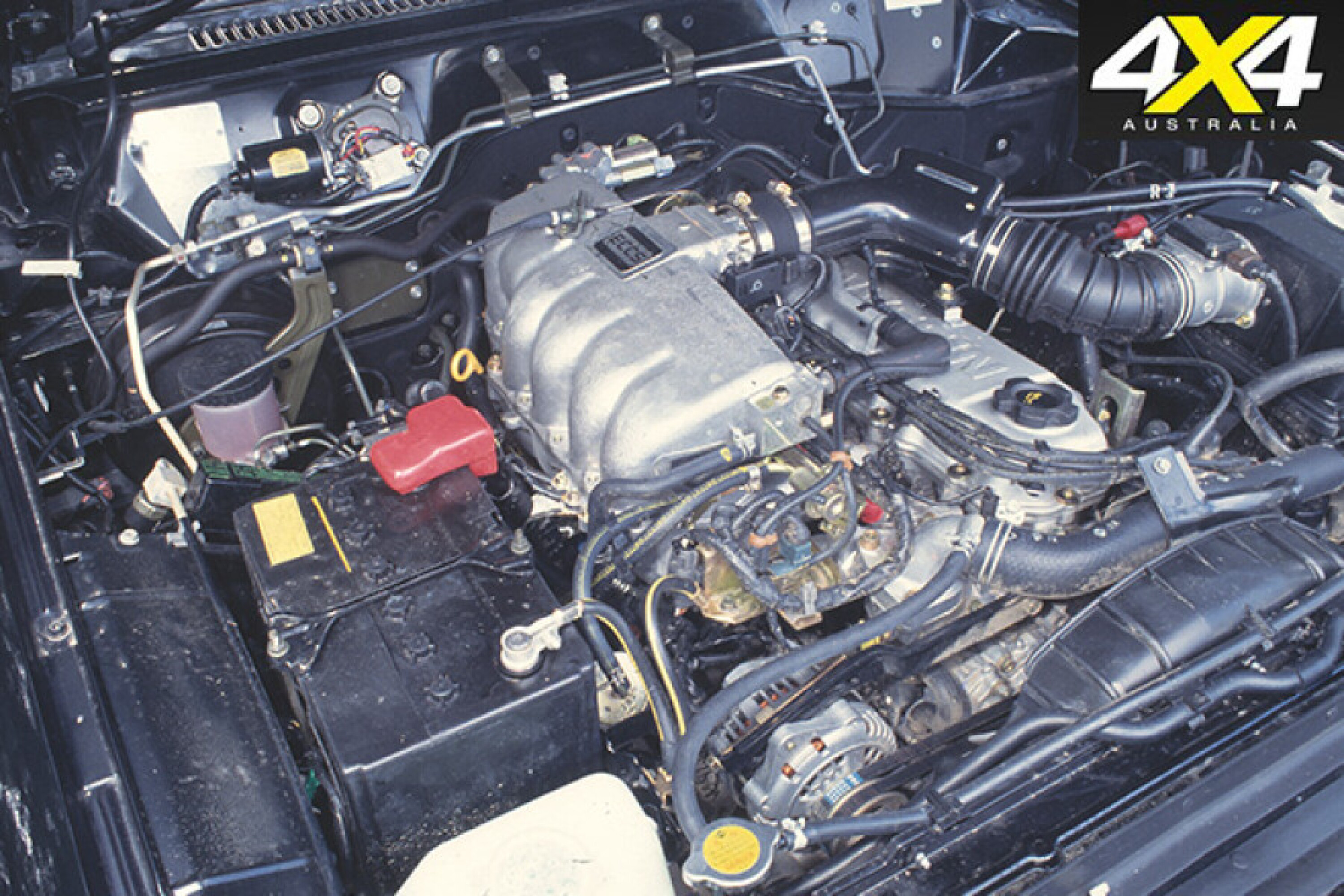
However, the leaf-spring version was still a favourite among rural/business buyers; old-school thinking dictated that only leaf springs were suitable for hauling heavy loads.
The GQ Patrol underwent another update in 1995, at which point the RD28T 2.8-litre turbo-diesel six-cylinder engine was added to the line-up, in both DX and ST trim levels. The boosted engine produced the same peak power as the TD42 (85kW), albeit at slightly higher revs (4400rpm as opposed to 4000rpm), but couldn’t match the bigger, naturally aspirated engine for torque output, making just 235Nm at 2400rpm as opposed to 264Nm at 2000rpm.
Nevertheless, on-road performance was similar thanks to significantly shorter gearing; the trade-off being less relaxed highway touring. Only available with a five-speed manual transmission, the RD28T’s gearbox was a lighter unit than the one mated to the TD42, and it also missed out on the latter’s excellent transmission-mounted drum parking brake.
Despite its shortcomings, the RD28T version of the Patrol proved popular thanks to keen pricing
Despite its shortcomings, the RD28T version of the Patrol proved popular thanks to keen pricing – it offered a saving at the time of around $4K compared to a similarly equipped TD42 Patrol.
Nevertheless, the TD42 Patrol was the favourite among outback tourers who loved this engine’s relative simplicity, decent performance and legendary reliability. For those who wanted extra performance, a number of Nissan dealers offered the superbly engineered Safari turbo and intercooler kits as a dealer-fit option.
Despite the big choice of engine/transmission/spec-level options offered by Nissan, towards the end of the GQ’s lifespan the Patrol was no longer a match for Toyota’s 80 Series LandCruiser, which was now available with a 1FZ-FE 4.5-litre petrol engine, a 1HZ 4.2-litre naturally aspirated diesel engine, and a 1HD-T direct-injection 4.2-litre turbo-diesel engine.
Nissan fans had high hopes when a rumoured replacement for the GQ Patrol was set to land in Australia in 1997 but, initially at least, many would be disappointed.
GU Patrol
When the new GU Patrol (Y61) arrived in Australia in late-1997, it boasted all-new sleek bodywork that was a far cry from the dated and boxy-looking GQ, which could trace its lineage to the MQ that first saw the light of day back in 1980.
But under the GU’s new skin lurked a familiar platform – the ‘new’ GU was essentially a GQ Patrol with new clothes.
Despite the chassis, suspension and driveline similarities, the GU Patrol was a big improvement over its predecessor, offering a wider body that delivered much more interior space, greater refinement, improved NVH (noise, vibration and harshness) levels, better aerodynamics and a vastly more comfortable interior.
On the downside, the GU was significantly heavier than the GQ, and when it first landed the GU Patrol was only available with Nissan’s new TB45E 4.5-litre OHV petrol six, mated to either a five-speed manual gearbox or four-speed auto. And while the petrol six-pack offered decent performance on the road and a good spread of torque (145kW at 4000rpm; 350Nm at 4300rpm), it was thirsty and not at all aligned with the market that Nissan had previously cultivated with Patrol, which in the latter years of the GQ model was heavily skewed towards diesel sales.
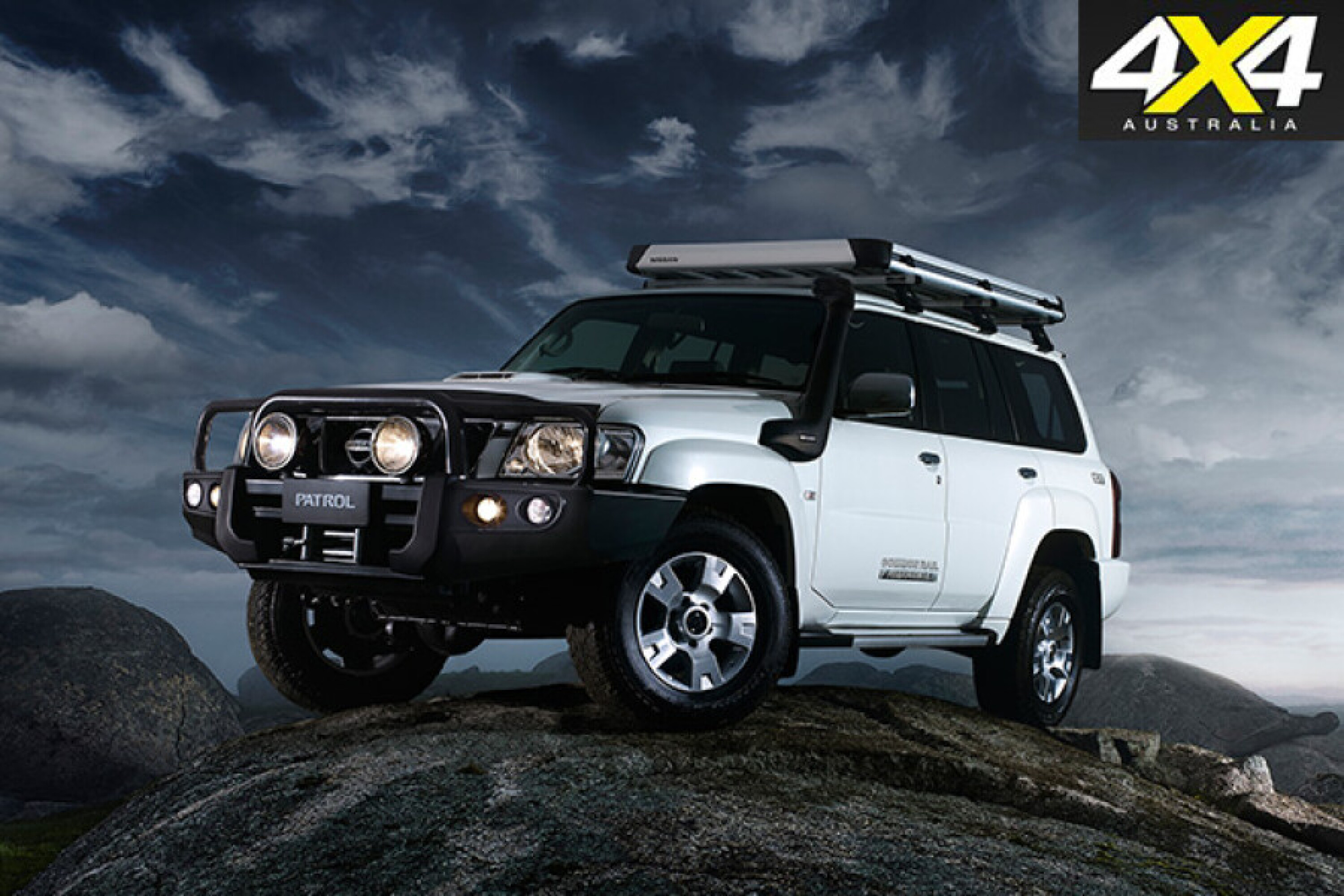
Further limiting the chance of early sales success, the GU Patrol was initially launched in just ST and Ti model variants; there was no longer the wildly popular (and affordable) RX version, and the base-spec DX model was not due to appear until around mid-1998.
The first of the GU Patrol oil burners was the RD28ETI, which was an electronically injected and intercooled version of the GQ Patrol’s 2.8-litre turbo-diesel six. Claimed power was up to 95kW at 4000rpm and torque up to 252Nm at 2000rpm, but in the GU Patrol the engine had to deal with an additional 230kg of weight compared to the GQ. Unfortunately, the new turbo-diesel was not the most refined engine around; performance below 2000rpm was wanting, and above that there was a sudden surge as the turbocharger did its thing.
Adding to the problem was a light and overly sensitive throttle that made smooth progress, particularly in bumpy off-road conditions, somewhat difficult to achieve. The RD28ETI was initially offered in DX ($39,950) and ST ($43,990) trim levels, with a five-speed manual transmission the only gearbox choice.
When the TD42 4.2-litre naturally aspirated diesel version of the GU Patrol DX was finally launched in mid-1998, Nissan quoted slightly more output than the engine developed in its GQ application (up from 85kW to 91kW at 4000rpm and from 264Nm to 272Nm at 2000rpm). However, with a heavier body to lug around, performance was somewhat blunted.
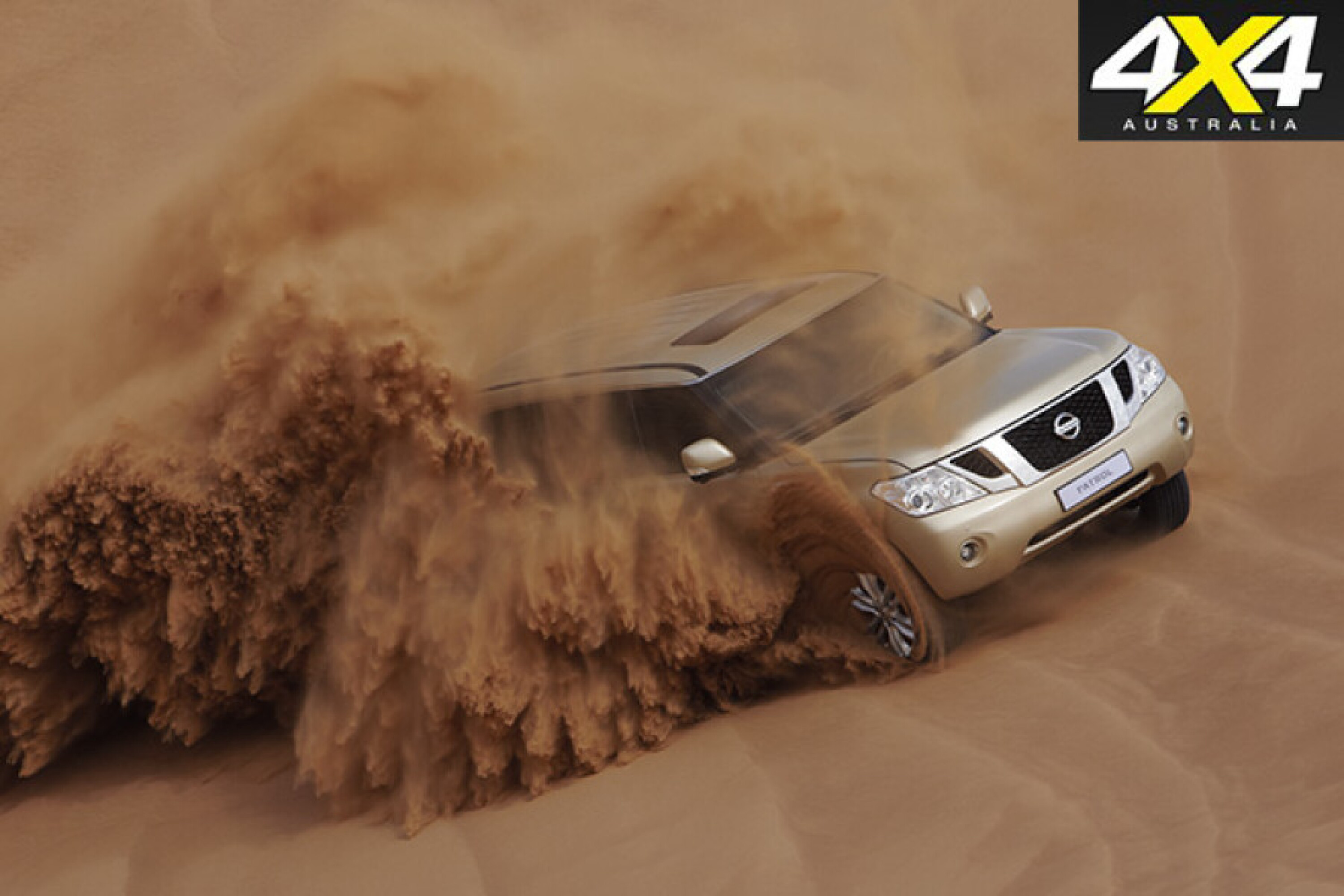
This diesel was also offered in cab-chassis and coil cab variants of the GU, and in early 1999 these utility models were also the first to receive the new TD42T, a turbocharged version of the TD42. The low-boost turbo boosted output to a modest 114kW and 330Nm and, importantly, it didn’t affect the big diesel’s flexible low-rpm grunt.
By mid-1999, the TD42T was made available in Patrol ST wagon specification, making it the most powerful diesel engine in its class (Toyota only offered the 1HZ in the 100 Series Cruiser at this stage and was yet to re-introduce an electronically injected version of the 1HD-FT).
In 2000, Nissan finally flicked the old RD28ETI 2.8-litre turbo-diesel six-pack in favour of an all-new four-cylinder turbo-diesel engine called the ZD30. This was the first time a Patrol had been powered by an engine that wasn’t a straight-six. With a claimed 116kW and 354Nm, the ZD30 promised a modern alternative to the old-school TD42 and TD42T powerplants, as well as an auto transmission.
However, the new engine had a few gremlins and it gained a reputation for poor reliability. Problems included fuel pump issues and piston failures, and Nissan eventually increased the oil capacity of the engine and lowered the oil viscosity rating in an attempt to resolve the faults.
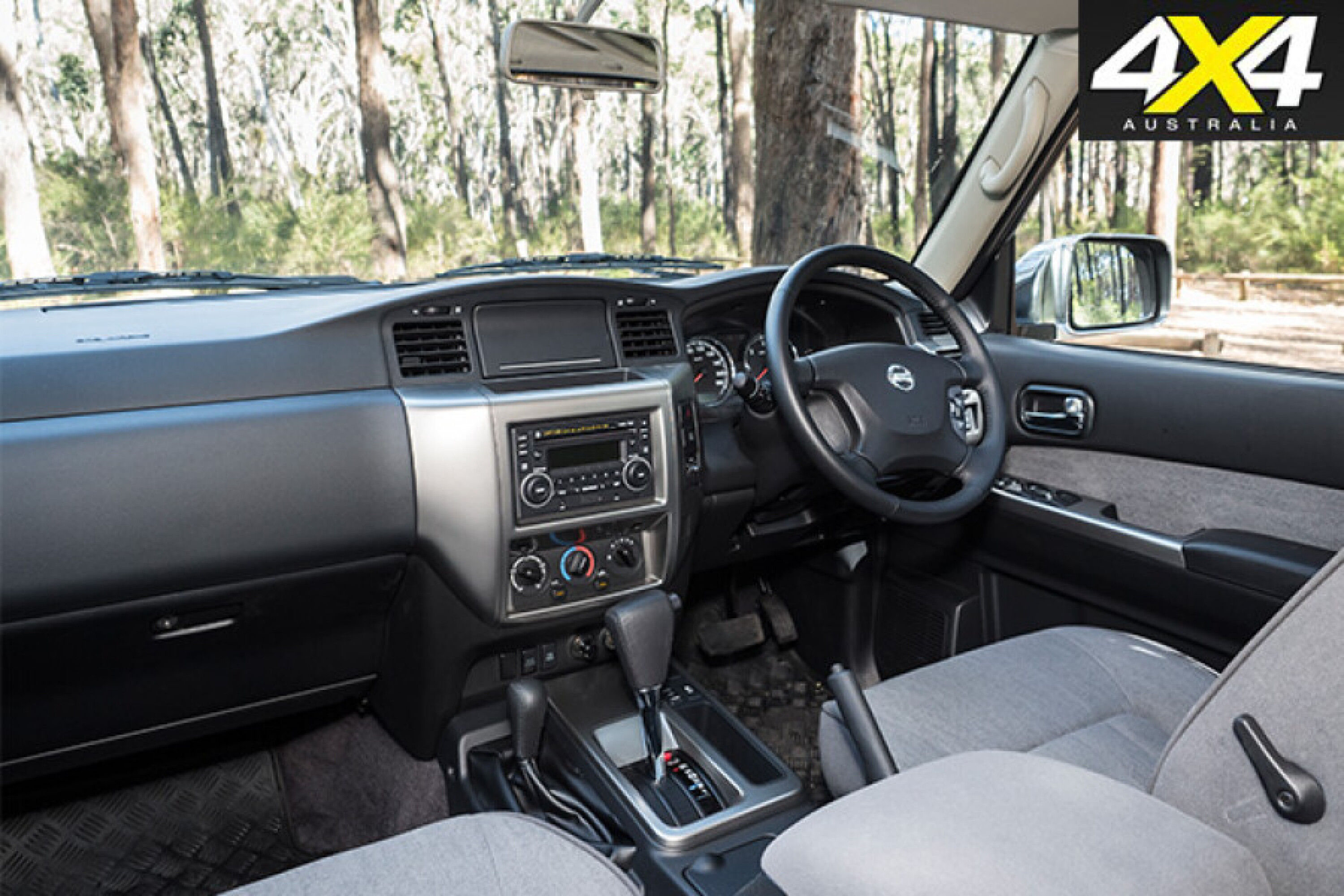
In 2001, Nissan increased the capacity of the GU’s petrol engine to a whopping 4.8 litres. It was thirsty, but it developed an impressive 185kW and chunky 420Nm, giving it class-leading performance.
The TD42T was given an intercooler in 2003 and renamed TD42Ti, and while power output remained unchanged at 114kW, torque was up slightly to 360Nm. Back-to-back testing back in 2003 showed that the more modern ZD30 had a slight performance edge over the TD42Ti, but the latter felt more refined.
The GU Patrol received its most significant visual makeover towards the end of 2004. Its legendary reliability and simplicity (the only electronic component on the TD42Ti injection pump was a throttle-position sensor that interacted with the EGR valve) made it more suited to remote outback travel. Having said that, the TD42Ti could get quite hot when driven in soft sand, but fitting a bigger aftermarket radiator was an easy fix.
The GU Patrol received its most significant visual makeover towards the end of 2004, scoring revised bodywork and a new interior. The ST and Ti models also received larger-diameter 17-inch wheels, and Nissan put some effort into NVH improvements.
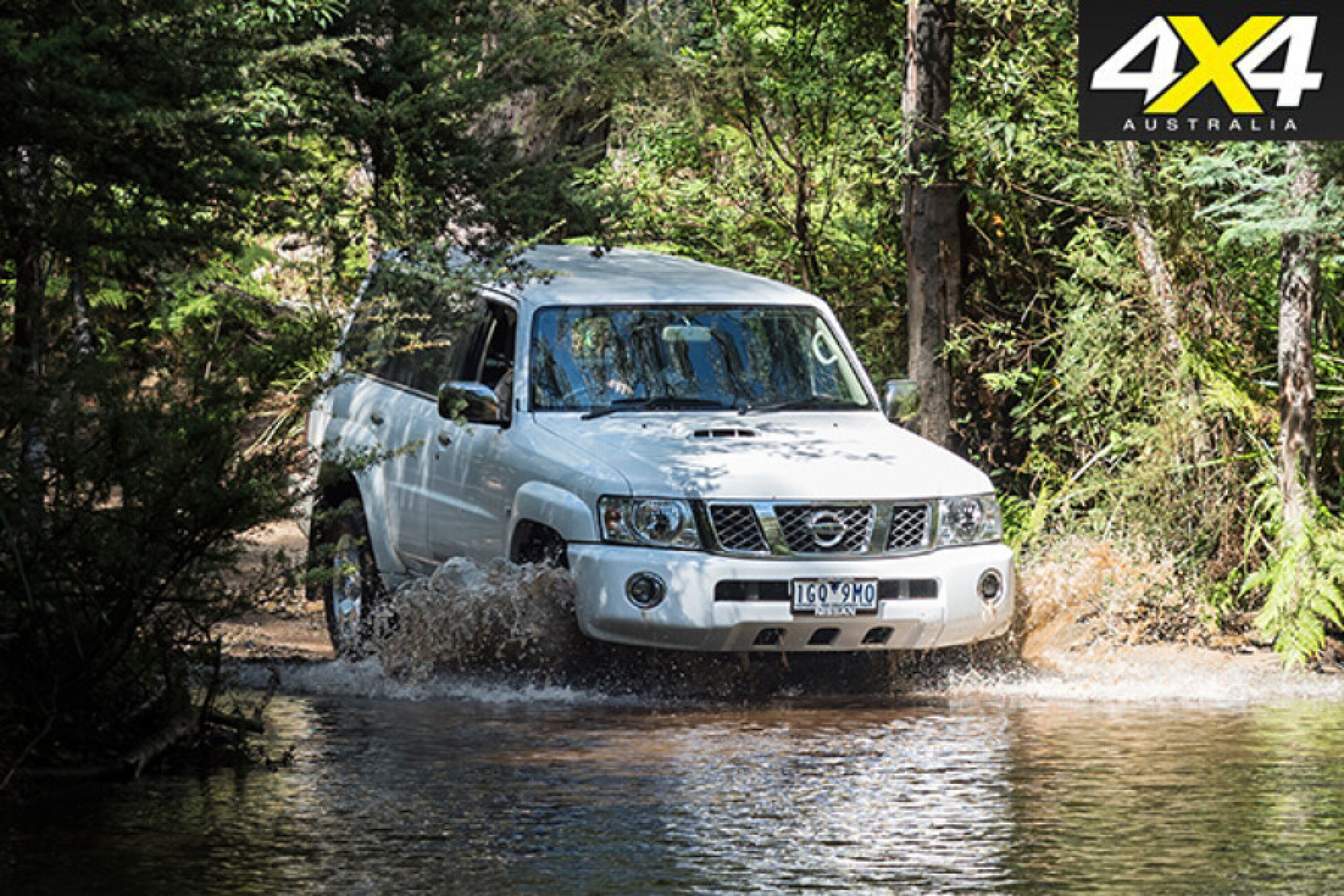
The 3.0-litre ZD30 turbo-diesel also came in for some upgrades, with improvements to the injector pump design, revised injector nozzles, reduced engine friction, an ECU tweak and larger exhaust diameter. Power was up slightly to 118kW at 3600rpm and torque (in manual variants) increased to 380Nm at 2000rpm (autos remained at 354Nm).
With the demise of the TD42 and TD42T engines in 2006, the ZD30 became the only diesel option for GU Patrol buyers, with the most recent version having a common-rail injection system.
Y62 Patrol
The Y62 Nissan Patrol was introduced to the Australian market in 2013, marking a significant evolution in the Patrol lineage.
This generation moved away from the GU series’ rugged, live-axle setup, adopting a petrol-only independent front suspension that offered a far more refined on-road experience. This change also marked the end of the GU Patrol’s 4.8-litre inline-six petrol engine, with the Y62 focusing on V8 power for a blend of performance, comfort, and towing capability.
From its launch, the Y62 was positioned as a premium large SUV, featuring a host of luxury and technology upgrades, but it retained full-time 4WD and a ladder-frame chassis to maintain its off-road credentials. Its independent suspension provided a smoother, more controlled ride, especially on paved roads, while still handling Australia’s varied terrain with competence.
In 2020, Nissan upgraded the Y62’s powertrain with a 5.6-litre naturally aspirated V8 producing 298 kW and 560 Nm. This engine solidified the Patrol’s place as a high-performance, large SUV capable of heavy towing and serious off-road work, while retaining the refined characteristics introduced in 2013.
Y63 Patrol
The next-generation Nissan Patrol, the Y63, is expected to arrive in Australia in late 2026.
It was unveiled in Abu Dhabi as a bold evolution of the Y62 and will combine modern design, advanced technology, and improved performance. It will replace the V8 with a 3.5‑litre twin-turbo V6 producing 317 kW and 700 Nm, paired with a nine-speed automatic, and will also offer a 3.8‑litre naturally aspirated V6 option.
The Y63 will feature a fully customisable adaptive air suspension, six drive modes, and enhanced off-road systems, while the interior will provide up to 30 per cent more space, quilted massage seats, a 28.6‑inch Monolith display, and advanced connectivity and safety technologies including ProPILOT, 3D Around View, and multiple airbags.
Its exterior will introduce a wider V-motion grille, Double C headlights with Adaptive Driving Beam, a full-width rear light bar, and optional 22‑inch wheels, projecting a modern yet instantly recognisable Patrol presence.
Local timing for Australia is not yet confirmed, but the Y63 will continue Nissan’s legacy of premium off-road capability with luxury and refinement.
Utemaster is giving ute owners in Australia and New Zealand the chance to score a serious setup upgrade.
The Ultimate Ute Upfit giveaway offers one winner in each country a full vehicle transformation worth up to $30,000, fitted and ready to go. Utemaster has teamed up with leading off-road brands including Maxtrax, ROH, Rhino-Rack and Redarc to create a complete build package.
Prize pack includes:
- Utemaster Centurion Canopy with cantilever, electrical panel, awning brackets, lighting kit and shelving unit.
- Four ROH off-road alloy wheels (choice of colour and offset).
- Four Maxxis Razr tyres (mud terrain or all terrain).
- Custom Lithium 200Ah ultra-slim next-generation lithium battery.
- GME XRS-370C4P XRS™ Connect 4WD pack.
- Rhino-Rack awning and gear case.
- Two pairs of MAXTRAX MKII boards, beach recovery kit and universal mounting kit.
- Lightforce set-up with 40-inch Viper light bar, four ROK9 ambers, two ROK20 floods, harness and connectors.
- Tough Dog TD-R Pro Series suspension kit (or Foam Cell alternative if unavailable for the winner’s vehicle).
Foam Cell suspension kits are compatible with selected Ranger, BT-50, Triton and Navara models (2011–2025) but are not yet available for the BYD Shark. The prizes cannot be redeemed for cash.
Entry is open only to owners of compatible utes:
- Ford Ranger: PX Series (2011–2022): XL, XLS, XLT, Wildtrak, Raptor; RA Series (2022–2025): XL, XLS, XLT, Sport, Tremor, Raptor, Wildtrak, Wildtrak X, Platinum.
- Mazda BT-50: UP/UR Series (2011–2020): GT, XT, XTR; TF Series (2020–2025): GT, SP, XT, XTR, XS.
- Isuzu D-Max: (2020–2025): LX, LS, SX, LS-M, LS-U, LS-U+, X-Rider, X-Terrain.
- Mitsubishi Triton: KJ/KK/KL Series (2015–2023): GLS, GLX, GLXR, GSR; LC/MV Series (2024–2025): GLX, GLX+, VRX, GLS, GLX-R, GSR.
- Nissan Navara: D23/NP300 Facelift: SL, ST, ST-X, Pro-4X.
- Toyota Hilux: GUN/N80 (2016–2025): Workmate, SR, SR5, SRS Cruiser, Rogue, GR-Sport.
- Volkswagen Amarok: NF Series (2023–2025): Core, Life, Style, Panamericana, Aventura.
- BYD and Kia Tasman: Eligible, though some accessories are still in development and may require a longer fitment timeframe.
It’s a rare chance to turn your ute into a fully equipped adventure rig without spending a cent. Entries close October 31.
Audi may be preparing to enter a corner of the 4×4 market with a luxury off-roader aimed squarely at Land Rover’s Defender and the Mercedes-Benz G-Class.
According to UK-based publisher, Autocar, the model – shrouded in secrecy – is said to combine hardcore off-road capability with Audi’s signature refinement, potentially serving as a flagship for the brand’s more mainstream SUVs.
The concept of a rugged, Quattro-inspired 4×4 has been discussed internally since at least 2023. Design teams have reportedly been drawn to the idea of a bold, upright shape that would stand out in Audi’s line-up while signalling genuine off-road intent. When asked about the project by Autocar, Audi CEO Gernot Döllner offered little concrete information but added intrigue. “Stay tuned,” he said, later adding, “don’t give up on that dream” when pressed on the idea of a true Defender rival.
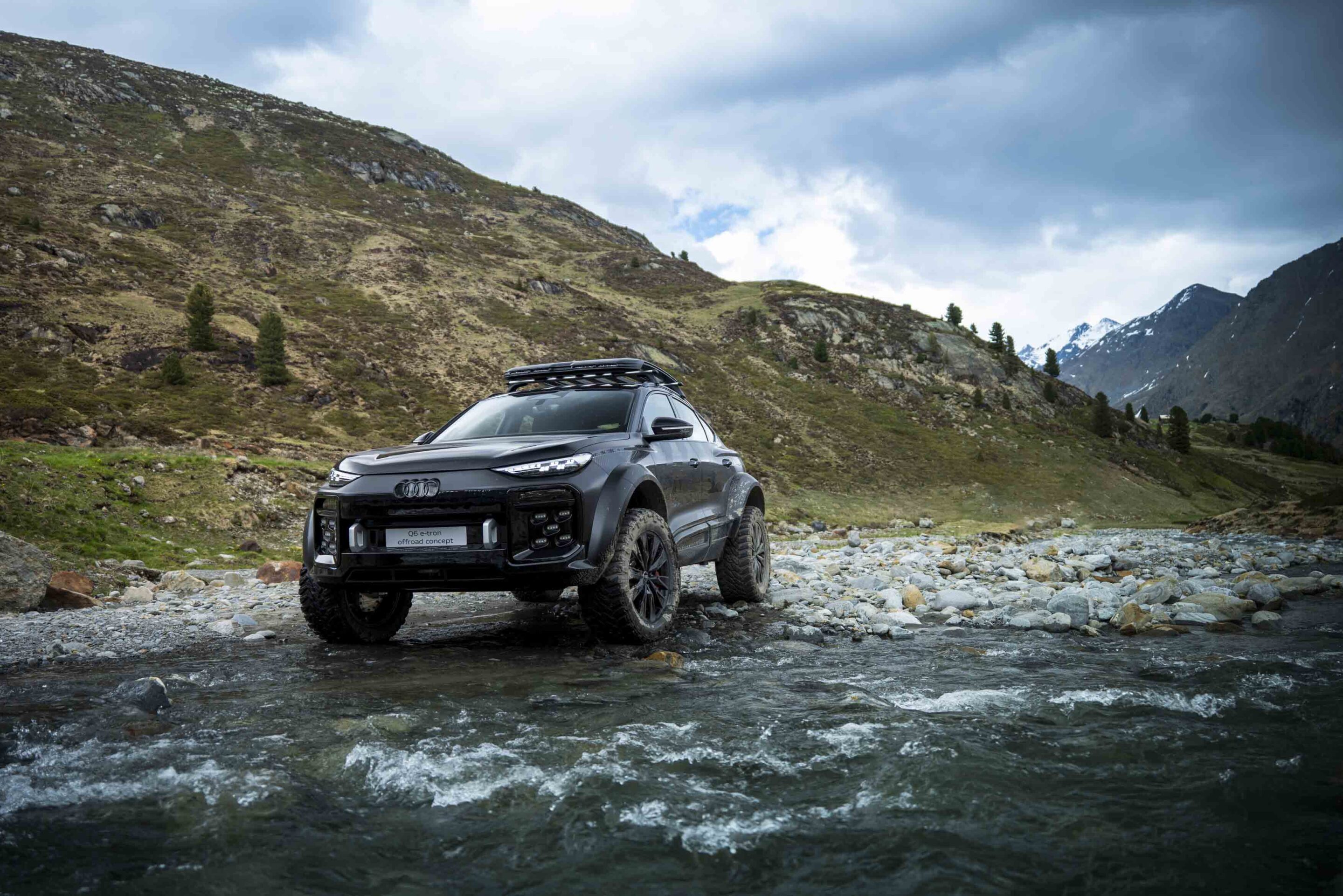
Speculation among industry observers suggests the SUV could combine a strong, boxy silhouette with features aimed at serious off-roaders, potentially including advanced traction systems, configurable drive modes, and even electrified powertrains.
Some insiders also think Audi could benefit from Volkswagen Group’s revived Scout brand in the USA, which is developing all-electric off-roaders. This might give Audi a head start on electrification and rugged capability without developing an entirely new platform from scratch.
At this stage, almost nothing is confirmed. Engines, pricing and production plans remain unknown, and Audi has not officially committed to bringing such a model to market. What is clear, however, is that a fully realised, premium 4×4 from Audi would place the brand in a rarefied segment alongside the Defender and G-Class.
Audi unveiled the Q6 e-tron offroad concept earlier this year (the photos of which are used throughout this article), a prototype with two electric motors producing 380kW and portal axles that enable climbs of up to 45 degrees. Built on the Premium Platform Electric (PPE), the concept features a 160mm higher ride height and a 250mm wider track.
Speculation still surrounds the next-gen Toyota HiLux, but is there any concrete info we can actually take to the bank?
Spy shots from Thailand have confirmed earlier reports the HiLux may not be an all-new model but rather a heavily updated version of the current vehicle. Reports also indicate it will retain the ageing IMV platform, with significant changes to the front and rear ends, including a new hood, bumper, grille and headlights. However, the mid-section will remain largely untouched.
The HiLux is also expected to debut in Thailand in November, 2025.
JUMP AHEAD
- October 2025: Leaked image reveals interior
- September 2025: Fresh details emerge ahead of launch later this year
- September 2025: Expected to debut in Thailand this November
- August 2025: Single-cab spied ahead of global reveal
- August 2025: Interior leak reveals possible tech upgrade
- July 2025: HiLux could feature plug-in hybrid option
- June 2025: Multiple spy shots surface
- May 2025: Should I cash in on a deal, or wait for the new HiLux?
- VOTE: GR HiLux v Ranger
- Electric HiLux imagined
- Toyota new-model showcase
- How about a Prado ute?
- New Tacoma revealed!
- Mild-hybrid HiLux looking likely
- New 2025 HiLux imagined
- When will the new HiLux be revealed?
- New HiLux & Fortuner based on Tacoma
October 2025: Leaked image reveals interior
A leaked photo on social media appears to show the interior of Toyota’s next-generation HiLux, ahead of its official unveiling later this year.
Believed to be from a pre-production prototype, the image shows a broader, more horizontal dashboard design. A tablet-style display sits prominently in the centre, while the dash combines soft-touch materials with darker trims and maroon accents, hinting at a more premium finish.
September 2025: Fresh details emerge ahead of launch later this year
Government filings reveal early hints about what the next-gen HiLux could offer.
While Toyota has yet to confirm specifications, it appears the new HiLux could consolidate its engine range, with all Australian variants expected to use the 2.8-litre turbo-diesel four-cylinder 1GD-FTV. Two versions are suggested: a standard high-output model and a mild-hybrid variant, which could feature on higher-spec trims.
September 2025: New HiLux expected to debut in Thailand this November
Reports suggest the new HiLux may debut this November.
According to Thai publication Car250, Toyota is reportedly gearing up to launch the new HiLux in Thailand this November at the Thai Motor Expo.
August 2025: Single-cab spied ahead of global reveal
New spy photos of the 2026 Toyota HiLux single-cab have surfaced ahead of its global reveal later this year.
Shared by Indonesian publication AutonetMagz on Instagram, the images show the single-cab with a refreshed front end, featuring slimmer headlights and a new grille, similar to updates seen on previously spied dual-cab models.
August 2025: Interior leak reveals possible tech upgrade
Instagram account @cars_secrets has shared leaked images showing what it reports to be the interior of the next-generation 2026 Toyota HiLux.
While nothing is official yet, these pictures suggest a much-needed update, with a focus on better technology and a more practical layout. The biggest change appears to be the addition of two 12.3-inch screens – one for the driver’s instruments and the other for infotainment. That’s a big step up from the current HiLux’s smaller 8.0-inch screen, and it should help to modernise and simplify the cabin.
July 2025: HiLux could feature plug-in hybrid option
A report out of Japan has shed new light on what to expect from the next-generation Toyota HiLux, with Best Car magazine claiming the updated ute will be available with a plug-in hybrid option when it arrives next year.
If the report proves accurate, it’ll be a major shift for Australia’s top-selling ute, which has so far only flirted with electrification through mild-hybrid diesel tech. The addition of a plug-in hybrid (PHEV) would see the HiLux take the fight to new-age rivals like the BYD Shark, GWM Cannon Alpha and upcoming Ford Ranger PHEV.
June 2025: Spy shots surface
More spy shots of the 2026 Toyota HiLux have surfaced on social media, following an earlier batch that emerged earlier this year.
Earlier reports published in 2024 indicated that the next-gen HiLux would not be an all-new vehicle as expected, but rather it would carry over its existing and ageing IMV platform. Spy shots appear to verify those claims.
May 2025: Should I cash in on a deal, or wait for the new HiLux?
With sales firing up across the country, 4×4 and camping enthusiasts are weighing up a familiar decision: Jump on a deal or wait for a next-gen model.
This is pertinent for the Toyota HiLux, with both updated and next-gen models landing over the next 18 months. However, for those gearing up for a trip or setting up a new touring rig, sharp runout pricing and dealer incentives are making it hard to look past the current model.
GR HiLux or Ford Ranger: Which would you take?
Toyota has finally done the Wildtrak-rivalling GR Sport with the current HiLux, but could we see a proper hero ute headline the next generation? Go vote!
How about a Prado ute?
While we wait for Toyota to unveil its next-gen HiLux, we’ve had a go at imagining how a new ute might look if it were based on the 2024 Prado, unveiled in August.
Here’s the new ?!
Here it is, Toyota’s new-gen Tacoma.
Get all the details at the link below, or continue reading our 2024 HiLux story here.
Mild-hybrid HiLux looking likely
New reports suggest the HiLux and Fortuner could cop a mild-hybrid powertrain, instead of a traditional one
New HiLux rendered with next-gen Tacoma vibes
With official design patent application images of the next-generation Toyota Tacoma appearing online in January, we swooped on the opportunity to imagine how the related new HiLux might look.
As we outlined in our earlier story below, the new HiLux is expected to ride on the same TNGA-based platform that will underpin the next Tacoma – a light-duty ute that has long been popular in the North American market.
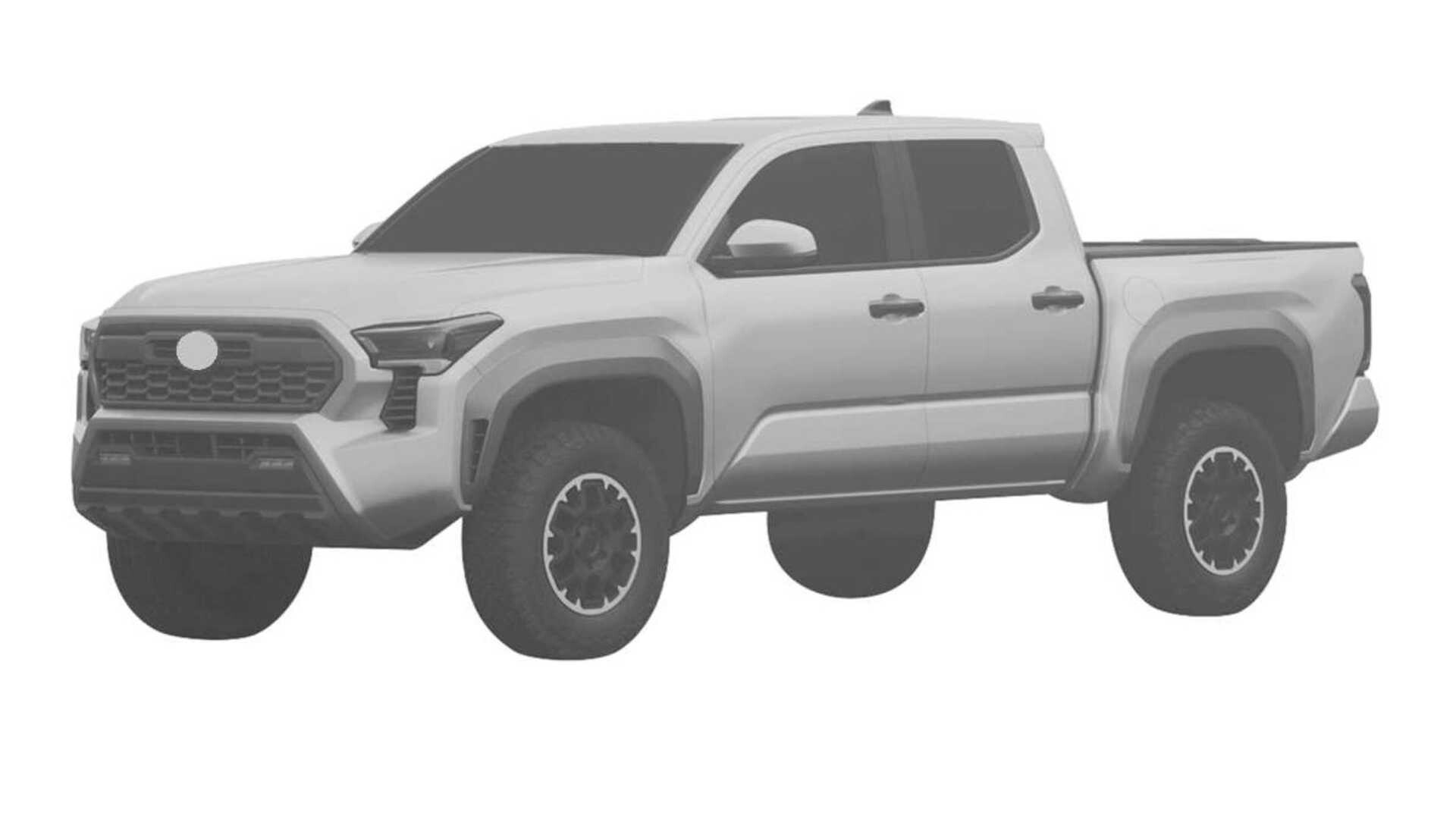
Recent generations of HiLux have seen the company’s Asian-market models follow their own styling cues, but we expect the new model to pull much closer to the bolder styling of its North American trucks.
Realistically, the company will need the new HiLux to carry a bold and powerful look, with Ford’s new Ranger proving popular in its new look inspired by the ‘F trucks’ sold in the US.
Indeed, the local business will be keen to get a new-gen HiLux into market as quickly as possible, with the new Ranger now regularly winning the monthly sales battle.
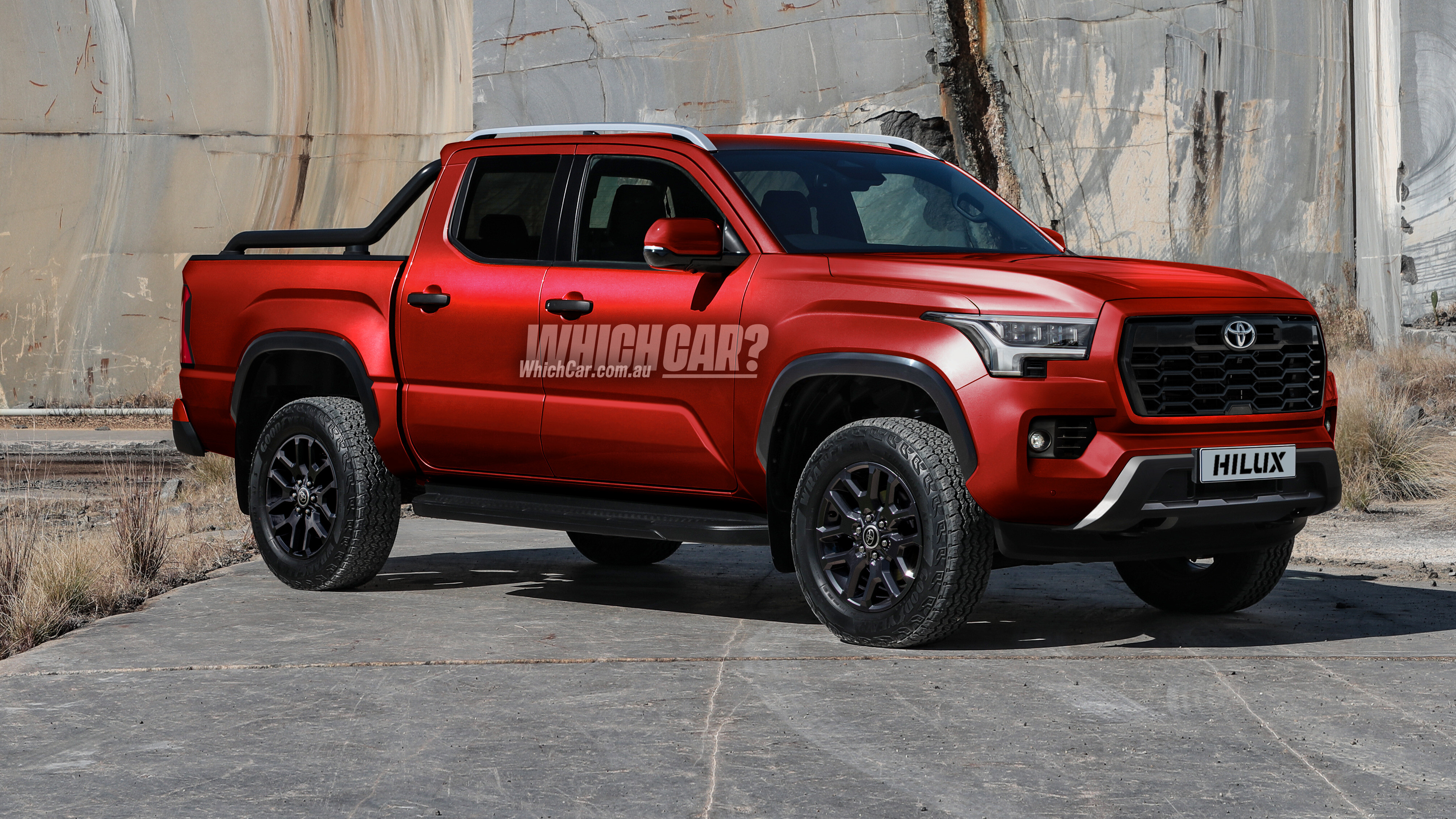
If the new HiLux looks anything like our speculative images here, it could prove more popular than ever before.
As for timing, the absence of any official word from Toyota, let alone any spy photos, suggests the new model is more than a year away from debut.
At this stage, we’d expect to see the new model debut in time for the 2025 model year – either late next year or early in the 2025 calendar year.
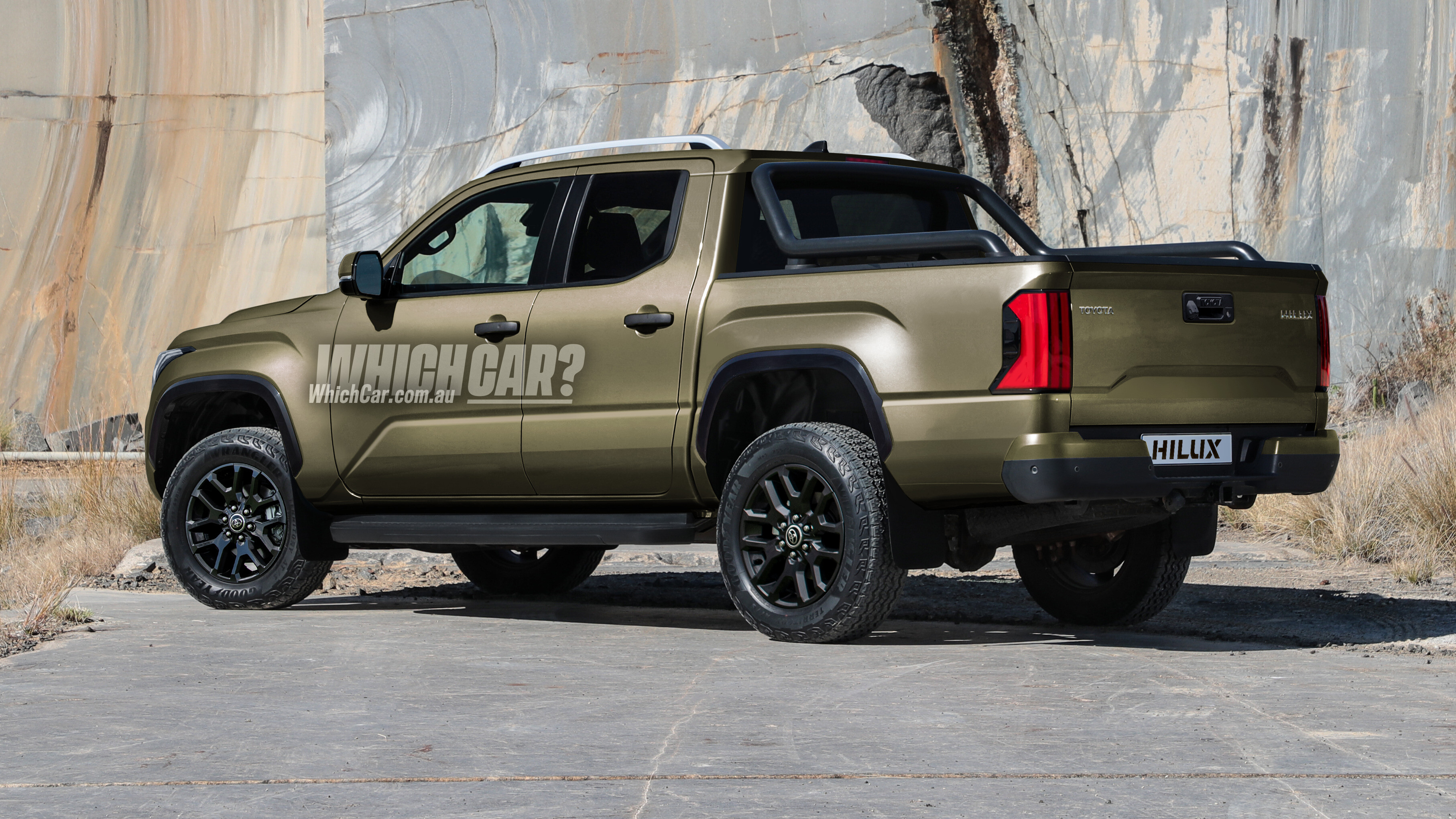
When will the HiLux be replaced with a new model?
It’s getting on a bit…
The current HiLux made its Australian debut in late 2015, before picking up a more stylish facelift in mid 2020. Since then, Toyota has enhanced the HiLux range further with a widened Rogue and a sorta-kinda hero GR Sport model, the latter due here in the second half of 2023.
2024 HiLux GR Sport
- Up 15kW, 50Nm, wider tracks, modified suspension
- Rival for Navara Warrior, Ranger Raptor
- Most powerful HiLux sold in Aus
- H2 2023 Australian release confirmed
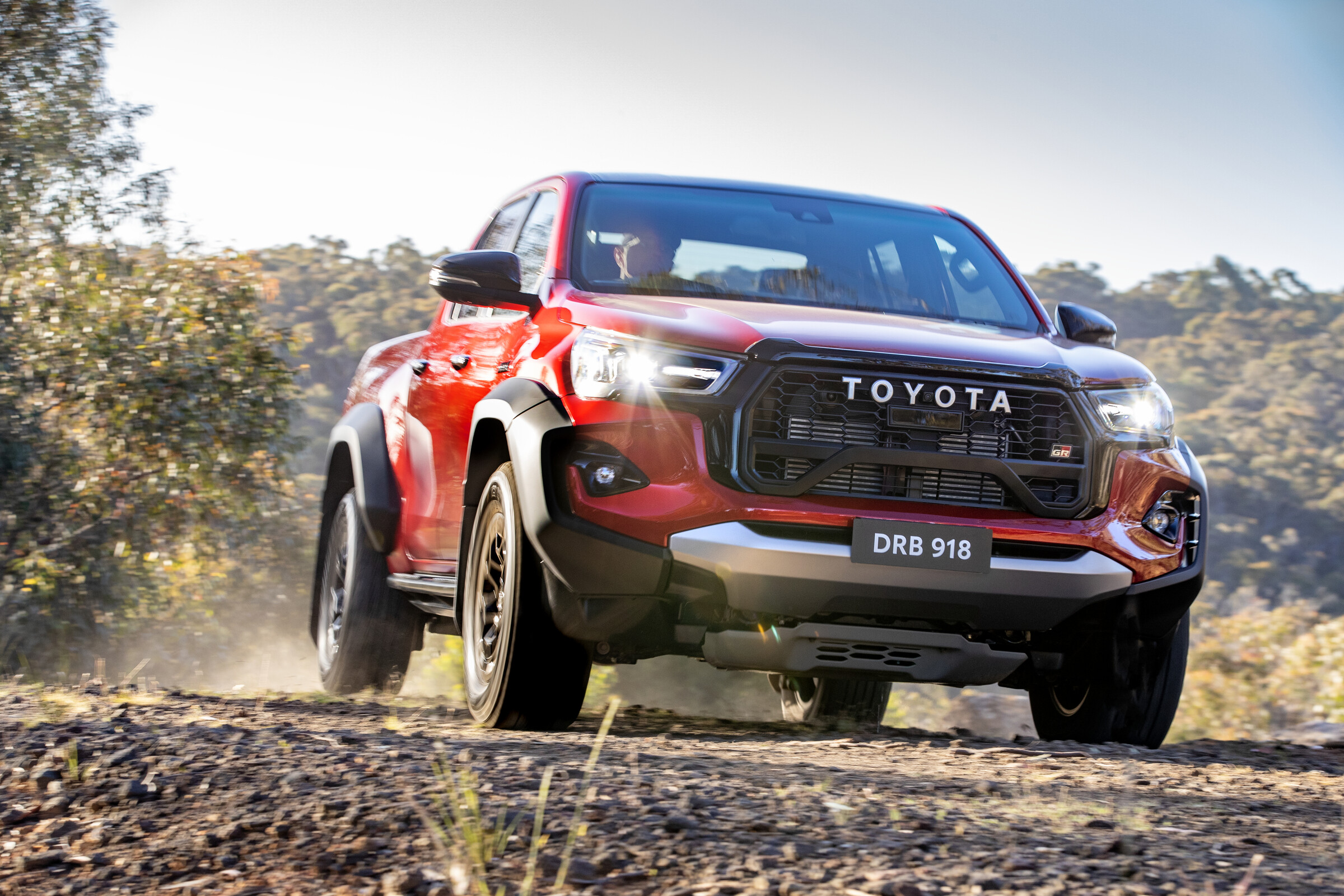
The story to here
September 2021: New HiLux, Fortuner to share platform with Tacoma
Ben Zachariah
Toyota will align four of its most popular models in the coming years by utilising its new chassis architecture.
According to a report in US publication Motor Trend, the next-generation Toyota’s popular HiLux ute and its Fortuner SUV equivalent will share the TNGA modular platform with the Toyota Tacoma pick-up and 4Runner SUV.
The move to the Toyota New Global Architecture (TNGA) unites the Tacoma and 4Runner – models only sold in the Americas – with HiLuxes and Fortuners sold in the rest of the world.
With a new model unveiled this week, the Tundra is the carmaker’s full-size pick-up, competing against the likes of the Ford F-150, Ram 1500, and Chevrolet Silverado – while the smaller Tacoma evolved from an earlier version of the HiLux.
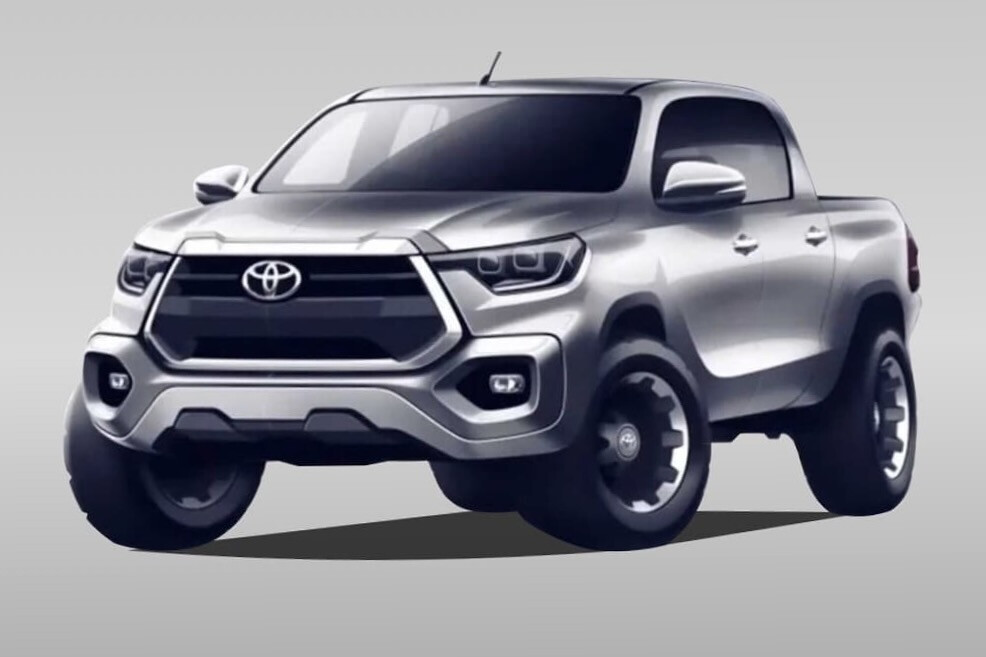
Just as the Fortuner is the SUV version of the HiLux, the ageing 4Runner is similarly related to the Tacoma, as well as sharing bloodlines with the FJ Cruiser and LandCruiser Prado 150 Series.
It’s likely the Japanese manufacturer will adopt a similar strategy to the new Tundra, which shares its TNGA-F underpinnings with the new LandCruiser 300 Series. While the ladder chassis allows any body to be fitted, both vehicles use near-identical powertrains and suspension design.
Exactly how similar Australia’s Toyota ute is to its American cousin remains to be seen, with the next-generation HiLux not due to arrive until at least 2025.
A leaked photo on social media appears to show the interior of Toyota’s next-generation HiLux, ahead of its official unveiling later this year.
Believed to be from a pre-production prototype, the image shows a broader, more horizontal dashboard design. A tablet-style display sits prominently in the centre, while the dash combines soft-touch materials with darker trims and maroon accents, hinting at a more premium finish.
Observers have noted similarities to Toyota’s North American Tacoma, particularly in the positioning of the infotainment screen and air vents, suggesting the HiLux may adopt a more global interior architecture. Unfinished panels and missing switchgear indicate this is an early development model.
Twin gloveboxes and outboard recesses for cupholders point to retained practicality, while the overall layout looks clean and user-friendly.
The image first appeared on the kurdistan_automotive_blog_ Instagram page in a Kurdish-language post, later translated: “Toyota Hilux 2026 Interior Section Replacement. Toyota Hilux 2026 interior photos have been taken and the discovery system is expected in the near future. Toyota Hilux 2026 interior photos have been leaked.”
Reports indicate the new HiLux will debut in Thailand this November at the Thai Motor Expo. The Australian range could consolidate around the 2.8-litre turbo-diesel 1GD-FTV, offered in a standard high-output and a mild-hybrid variant for higher trims.
Leaked exterior shots of single- and dual-cab models show slimmer headlights, a revised grille, updated rear lighting, and overall proportions suggesting a major facelift rather than a full redesign – suggesting the ute is expected to remain on the existing IMV platform.
Slattery Auctions – a family-run Australian business for 25 years – puts an eclectic range of 4x4s under the hammer, from work-ready utes and off-road weekend warriors to classic Cruisers and fully equipped touring rigs.
Since its 2000 beginnings in truck and transport asset auctions, Slattery has grown into a national operator, connecting buyers and sellers across the country while staying true to its family-owned roots and leveraging deep industry experience.
Its ever-changing selection of 4×4 vehicles ranges from tough off-roaders to practical highway tourers and everything in between. Each listing makes it easier to find the right fit for your needs. A straightforward buying process combined with the ability to inspect vehicles makes it a relatively easy experience.
We’ve handpicked a selection of 4x4s currently listed on the site, but keep an eye on when the auction closes so you don’t miss out on a bargain 👇
2014 Ford F150 SVT Raptor Special Edition
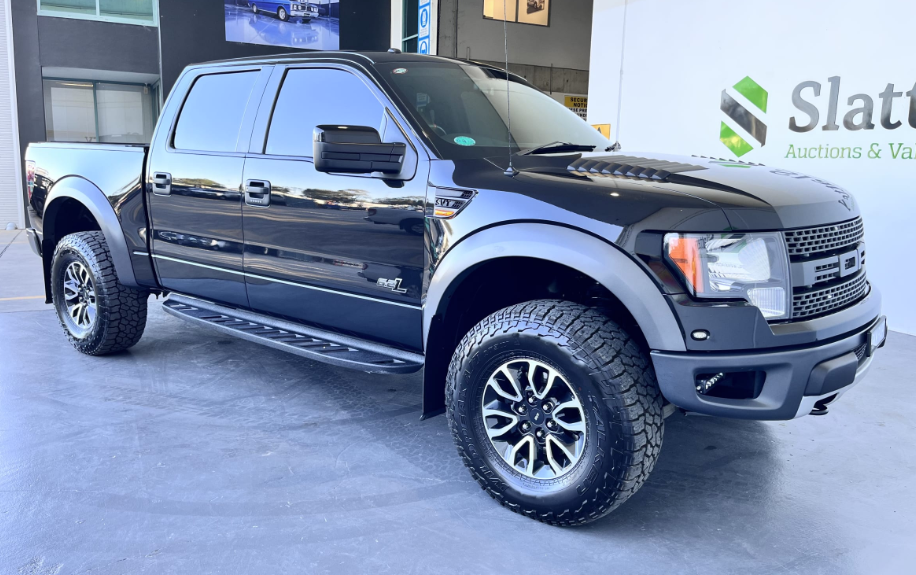
This 2014 Ford F150 SVT Raptor Special Edition is a high-performance, petrol-powered 4×4 pickup.
This example features Fox Racing shocks and airbag suspension for superior handling and ride comfort. With 51,359km on the odometer, it comes with the owner’s manual, master and spare keys, and is in good driving order. Sold unregistered and as-is, this Raptor Special Edition is a rare, capable 4×4 ready for enthusiasts seeking a performance off-roader.
- Total mileage: 51,359km
- Location: QLD
- Auction ends: October 29 at 18:00 (AEDT)
2011 RAM 2500 Laramie
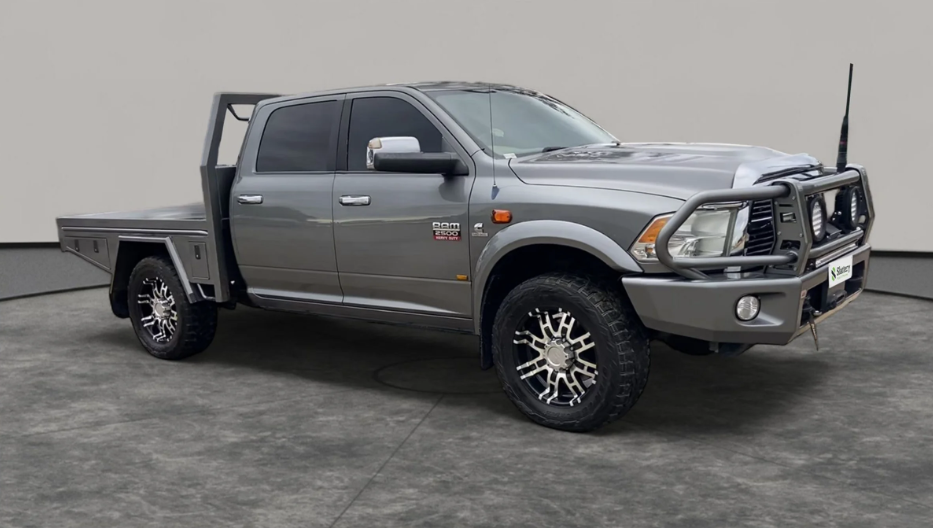
This 2011 RAM 2500 Laramie is powered by a 6.7L Cummins diesel engine producing 261kW, paired with a six-speed automatic transmission.
Featuring all-wheel drive, it comes as a tray/tabletop or cab-chassis configuration, making it versatile for work, towing or off-road use. Seating for five and the robust Cummins diesel engine provide a reliable platform for trades, touring, or modification projects. Sold registered and on consignment.
- Total mileage: 232,853km
- Location: VIC
- Auction ends: October 29 at 18:00 (AEDT)
2019 Toyota HiLux SR
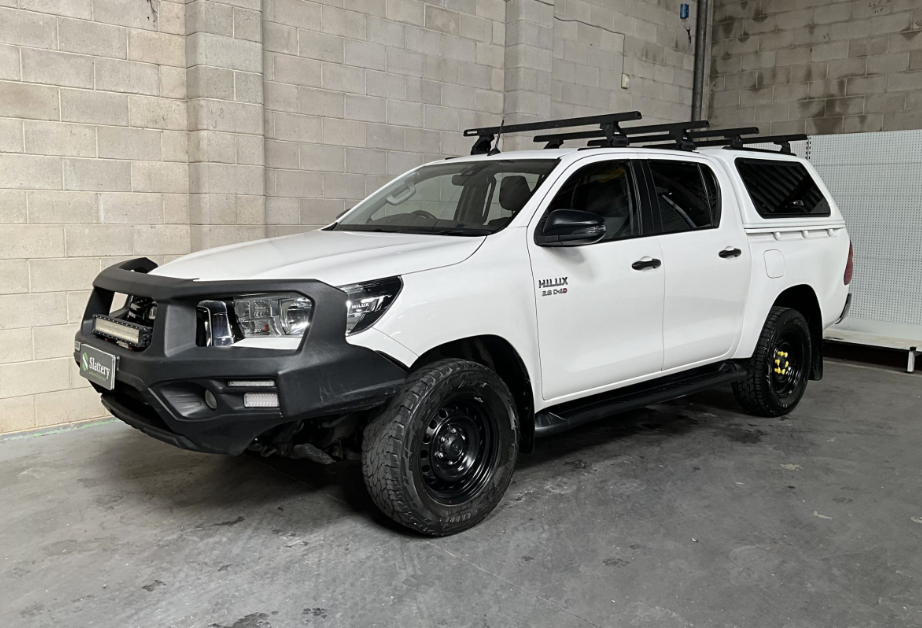
This 2019 Toyota HiLux GUN126R SR is a versatile 4×4 dual-cab pick-up, powered by a 2.8L turbo-diesel 4-cylinder engine with a 6-speed automatic transmission and full four-wheel drive.
With 117,686km on the odometer, it comes with the owner’s manual, master and spare keys, and full service history, last serviced at 114,910km. Sold unregistered without plates, the HiLux is driveable and in good condition overall. The body, trim, seats, carpets, and paint are all in good shape, with no rust present, making this a well-maintained, ready-to-go 4×4.
- Total mileage: 117,686km
- Location: SA
- Auction ends: October 13 at 16:30 (AEDT)
2020 Mercedes-Benz X-Class X250d
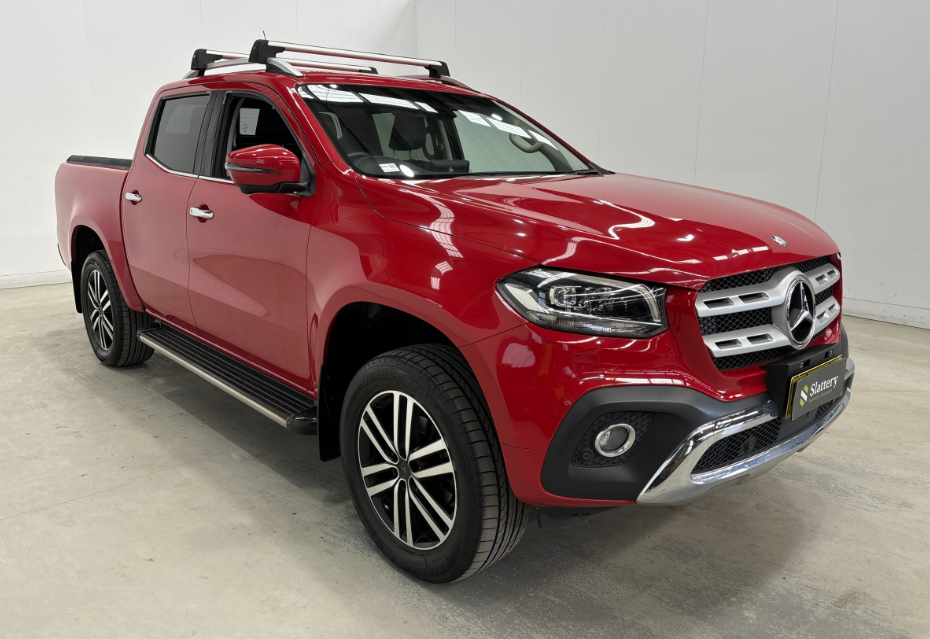
The 2020 Mercedes-Benz X-Class X250d is powered by a 2.3L turbo-diesel engine with a 7-speed sports automatic transmission and full 4MATIC four-wheel drive.
Odometer reads 57,449 km, and the vehicle comes with full Mercedes-Benz service history, last serviced at 54,275km, along with the owner’s manual, master and spare keys. Sold registered and on consignment, it includes a current roadworthy certificate and NSW plates, valid until May 5, 2026, with the balance of new car warranty until December 16, 2025.
- Total mileage: 57,449km
- Location: NSW
- Auction ends: October 14 at 20:00 (AEDT)
2014 Jeep JK Wrangler Overland
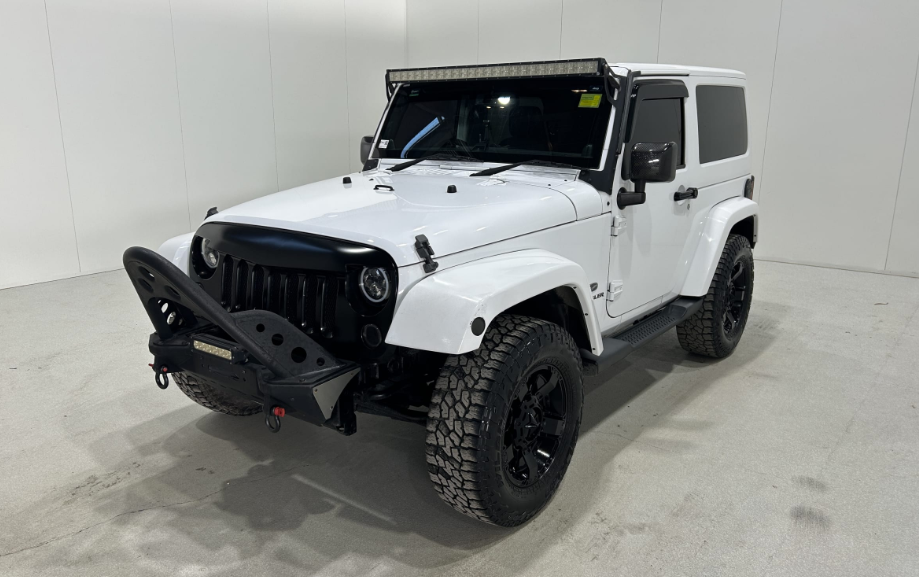
Up for auction is a 2014 Jeep JK Wrangler Overland, a capable 4×4 built for both off-road adventures and everyday driving.
Powered by a 3.6L V6 petrol engine with a 5-speed automatic and full four-wheel drive, it’s ready to tackle trails or highways. This Wrangler is being sold unregistered without plates from repossession and liquidation stock. Odometer reads 170,019km. Comes with the owner’s manual and master key (no spare key) and is driveable.
Cosmetic condition is fair: scratches and dents around the body, left headlight not working, surface rust present. Seats, trim, carpets, and paint show wear, but the body remains solid and mechanically sound. A solid base for a weekend warrior, off-road project, or touring build.
- Total mileage: 170,019km
- Location: NSW
- Auction ends: October 15 at 19:30 (AEDT)
2020 RAM 1500 Express
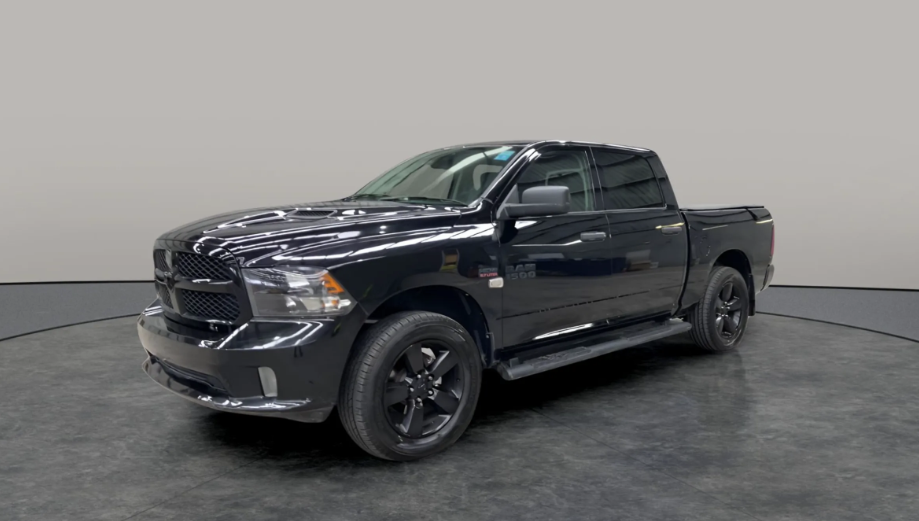
This 2020 RAM 1500 Express is a full-size 4×4 ute powered by a V8 petrol engine with automatic transmission, built for towing, work, and long-distance touring. Its four-wheel-drive setup provides both rugged off-road capability and highway comfort.
Sold unregistered without plates, it has an odometer reading of 106,230km and comes with full service history, last serviced at 57,298km. Both master and spare keys are included along with the owner’s manual, and the vehicle is driveable.
Overall condition is fair, with visible scratches and dents around the body. Paint is good, while seats, trim, and carpets show normal wear. A capable 4×4 utility ready for work, touring, or modification.
- Total mileage: 106,230km
- Location: VIC
- Auction ends: October 15 at 18:00 (AEDT)
2022 Suzuki Jimny GLX
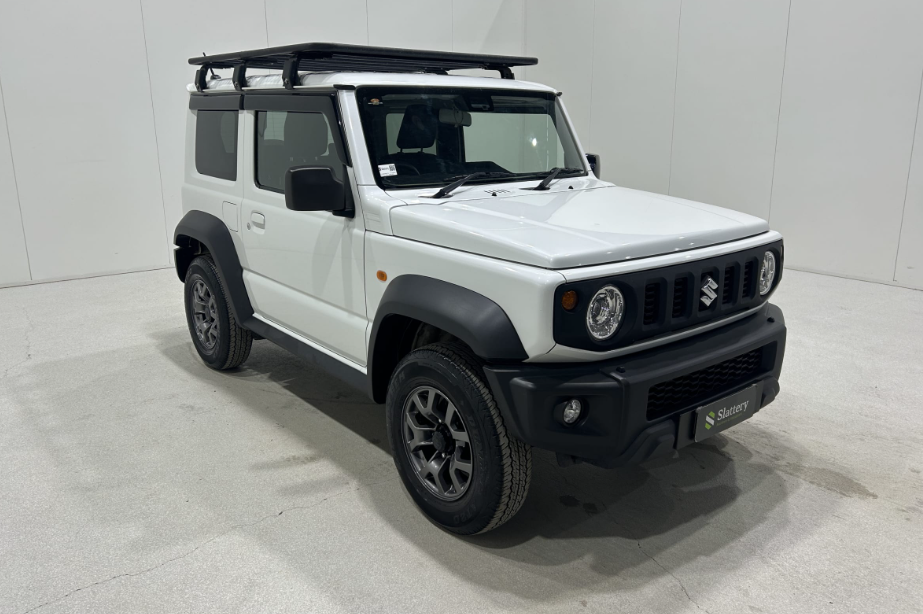
This 2022 Suzuki Jimny GLX AllGrip Hardtop is a compact, capable 4×4 SUV ideal for off-road adventures or city driving. Powered by a 1.5L petrol engine with automatic transmission and full four-wheel drive, it delivers agility and reliability on a variety of terrains.
Sold unregistered without plates for private buyers (registration and plates available only to licensed NSW dealers), it has 26,526km on the odometer and comes with full service history, last serviced at 19,232km. Both master and spare keys are included, and the vehicle is driveable.
Overall body, trim, seats, carpets, paint, brakes, and rust condition are good. Minor cosmetic issues include previous poor repairs on some doors and panels, small bonnet dents, stone chips on the roof gutter, and light scratches. Spare tyres are included and in excellent condition. A versatile 4×4 ready for weekend trips or city adventures.
- Total mileage: 26,526km
- Location: NSW
- Auction ends: September 15 at 19:30 (AEDT)
Always remember there are risks involved when buying vehicles at auction.
Ironman 4×4’s complete range of accessories and suspension kits for the BYD Shark is now available directly through the company’s nationwide retail and fitment network.
Previously limited to BYD dealerships, the change means Shark owners can now purchase and install Ironman 4×4 equipment either at the point of vehicle delivery or through any Ironman outlet across Australia.
“This release is a milestone for Ironman 4×4 and for BYD Shark 6 owners,” said Kristian Ristell, GM Global Product at Ironman 4×4. “By making our full range available both through BYD and directly via our own network, we’re ensuring every owner can access high-quality, PHEV-ready accessories designed to enhance capability, safety and lifestyle.”
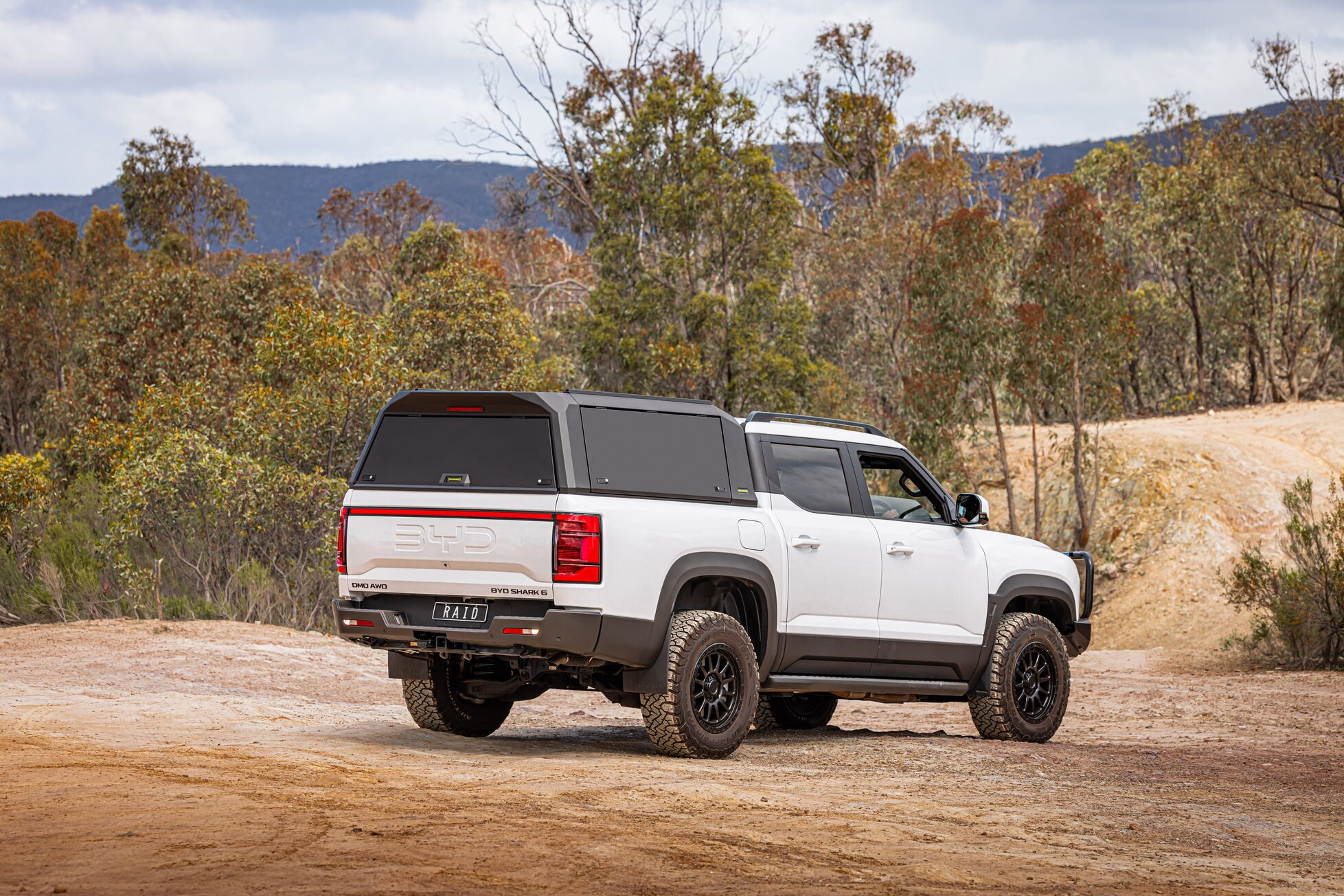
The updated line-up introduces several first-to-market products engineered specifically for the Shark platform. These include an aluminium sports bar, aluminium rear step tow bar, aluminium nudge bar, slip-resistant side steps, and comprehensive underbody protection – all designed to integrate with the vehicle’s factory bodywork and mounting points.
Ironman 4×4 has placed an emphasis on aluminium construction to reduce weight while retaining strength for off-road and towing applications – an important consideration for plug-in hybrid and electric vehicles.
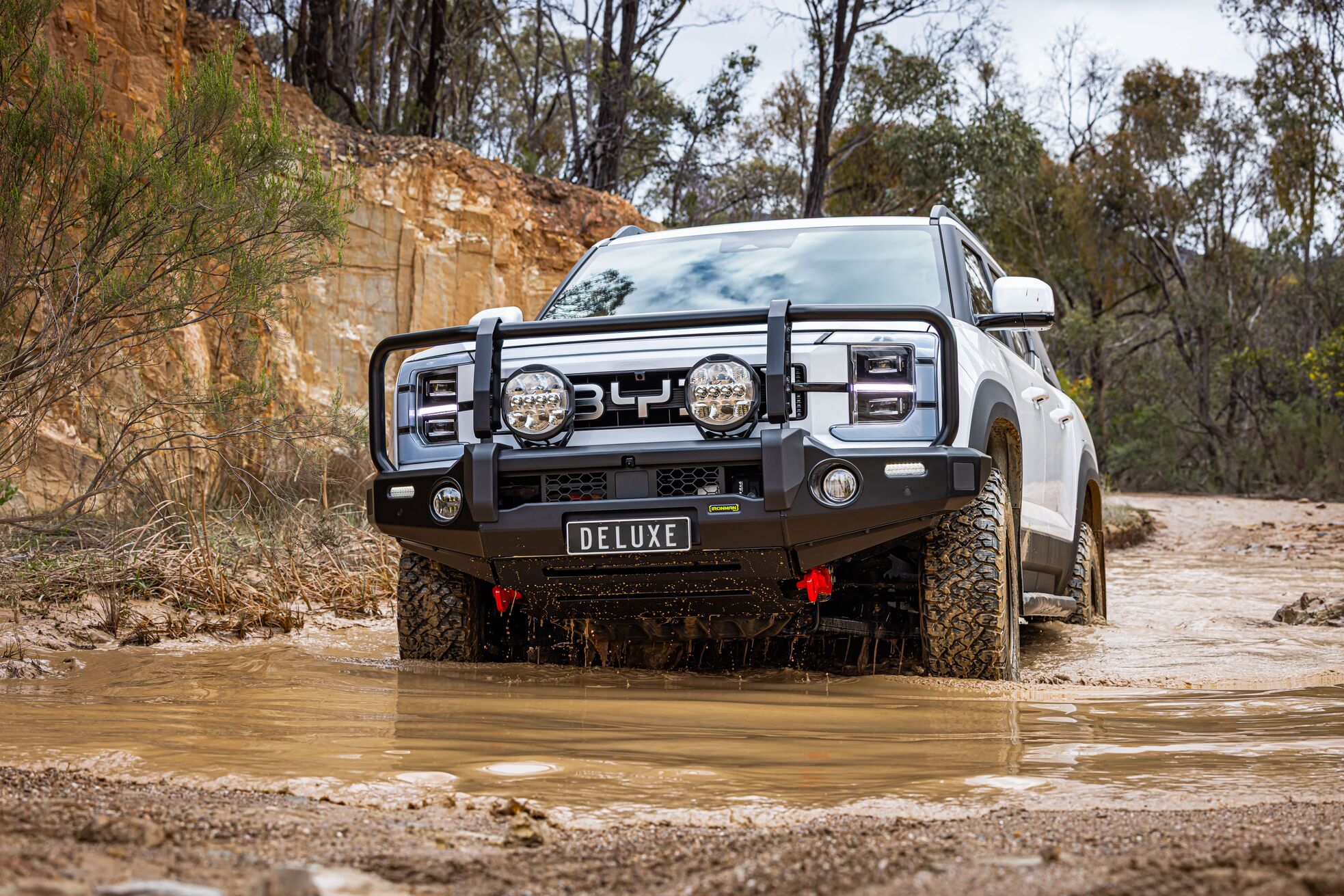
Key products expected to attract the most demand include a mix of touring, protection and storage solutions developed to meet the Shark’s payload and chassis characteristics. These include the Electronic Slide-Away Roller Shutter, Aluminium Raid Bull Bar, Aluminium Raid Canopy, Aluminium Raid Roof Rack, Aluminium Rear Step Tow Bar, Aluminium Roller Drawer Kits and the IM2.5 Monotube Suspension Lift Kit with optional GVM upgrade.
Most items are available now, with a small number of new releases expected in early 2026. Full details and availability can be found at ironman4x4.com.au/pages/byd-shark
For 4×4 enthusiasts exploring Australia’s backroads, wildlife collisions are an ongoing hazard. Recent data from insurer AAMI shows crashes involving animals on regional roads are frequent and costly, with serious consequences for both motorists and native wildlife.
Between July 1 2024 and June 30 2025, AAMI analysed 23,840 claims for wildlife-related accidents. Nearly one in five vehicles involved – around 18 per cent – were written off, with average repair bills of approximately $8000. Dusk remains the riskiest time for collisions, as animals become more active and visibility drops. Kangaroos were the most commonly hit species, followed by wallabies, wombats, deer, feral pigs and emus.
Victoria recorded the highest number of wildlife collisions (7851), while regional hotspots across the country included Dubbo (NSW), Sunbury (Vic) and Broken Hill (NSW). Friday proved to be the worst day of the week, most likely due to increased weekend travel.
“These figures show the serious and often costly consequences of wildlife collisions on our country roads,” said Tim Buckett, AAMI Executive General Manager Motor Claims Customer. “Not only do these accidents pose a significant risk to motorists and their vehicles, but they also have a tragic impact on our native wildlife. We urge all drivers to exercise extreme caution, especially when driving during dawn and dusk, and in known wildlife areas.”
Environmental pressures such as drought, floods, bushfires and habitat loss have also pushed more native animals onto roads, making them increasingly vulnerable while seeking food or shelter.
“Extreme weather events over the past 12 months continue to impact our native animals especially in regional Australia with many regions affected by ongoing drought, severe floods and bushfires,” said Leanne Taylor, Chief Executive Officer at Wildlife Information, Rescue and Education Service (WIRES). “During these weather events, native animals are forced out of their usual habitat and are increasingly at risk as they cross roads and highways seeking refuge and shelter.
“This is further compounded by ongoing loss of habitat through development and land clearing with many species including kangaroos, wallabies, wombats and koalas being displaced and vulnerable to car strikes as they search for new habitat.”
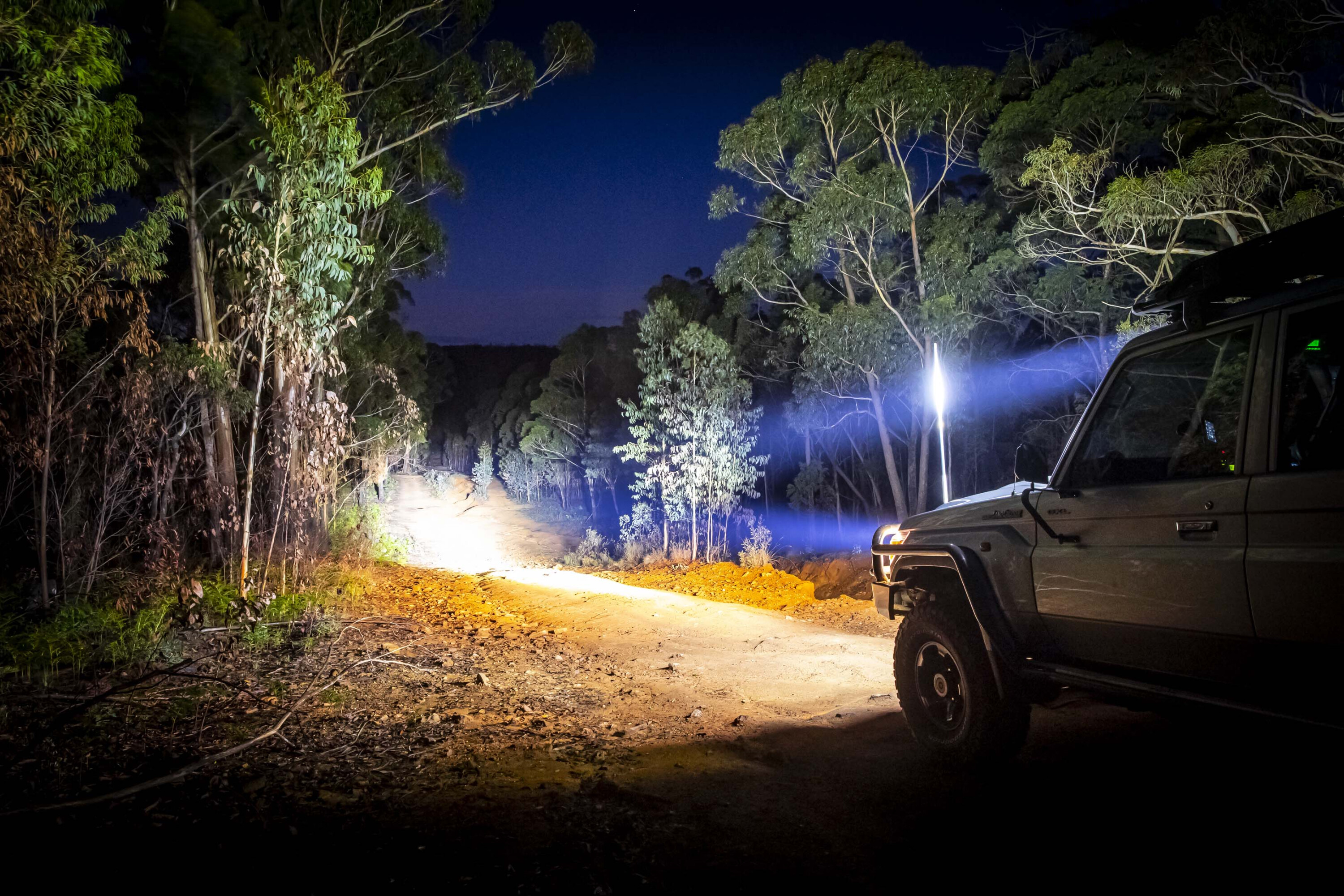
10 tips 4×4 drivers tackling country roads at dusk and dawn
- Reduce speed: Slower speeds give you more time to react to wildlife crossing the road.
- Use high beams and aftermarket LED lighting: Improve visibility on unlit roads, but dip for oncoming traffic.
- Install a bull bar: Provides added protection for your vehicle in the event of a collision with larger animals.
- Stay alert and scan ahead: Watch the roadside edges for movement, especially in bushland or paddocks.
- Avoid distractions: Keep focus on the road and surroundings; limit phone or infotainment use.
- Know the hotspots: Familiarise yourself with areas known for kangaroos, wallabies, and other wildlife.
- Drive defensively: Expect animals to move unpredictably, and be prepared to brake safely.
- Keep a rescue kit in your rig: Include a towel, gloves, and a box for injured joeys or chicks.
- Follow wildlife signage: Council and state warning signs indicate frequent animal activity.
- Report animal strikes safely: Contact WIRES or local authorities to help injured wildlife and prevent further accidents.
Animal collisions: Australia-wide
| Worst Month | June |
|---|---|
| Worst Day | Friday |
| Worst Time | Dusk |
| Most Common Animal | Kangaroo |
| Number of Collisions | 23,840 |
| Percentage of Cars Written Off | 18% (4164 vehicles) |
| Top Hotspots | Dubbo, Sunbury, Broken Hill, Gisborne, Goulburn |
Animal collisions: Victoria
| Worst Month | May |
|---|---|
| Worst Day | Saturday |
| Worst Time | Midnight |
| Most Common Animal | Kangaroo |
| Number of Collisions | 7,851 |
| Percentage of Cars Written Off | 20% (1,509 vehicles) |
| Top Hotspots | Sunbury, Gisborne, Heathcote, Toolern Vale, Benalla |
Animal collisions: NSW
| Worst Month | June |
|---|---|
| Worst Day | Sunday |
| Worst Time | Dusk |
| Most Common Animal | Kangaroo |
| Number of Collisions | 7,126 |
| Percentage of Cars Written Off | 17% (1,209 vehicles) |
| Top Hotspots | Dubbo, Broken Hill, Goulburn, Orange, Bungendore |
Animal collisions: Queensland
| Worst Month | July |
|---|---|
| Worst Day | Friday |
| Worst Time | Dusk |
| Most Common Animal | Kangaroo |
| Number of Collisions | 4,664 |
| Percentage of Cars Written Off | 16% (727 vehicles) |
| Top Hotspots | Warwick, Nebo, Charters Towers, Goondiwindi, Moranbah |
Animal collisions: South Australia
| Worst Month | May |
|---|---|
| Worst Day | Monday |
| Worst Time | Dawn |
| Most Common Animal | Kangaroo |
| Number of Collisions | 1,431 |
| Percentage of Cars Written Off | 19% (271 vehicles) |
| Top Hotspots | Port Augusta, Mount Gambier, Hawker, Flinders Rangers, Coober Pedy |
Animal collisions: Western Australia
| Worst Month | April |
|---|---|
| Worst Day | Sunday |
| Worst Time | Dusk |
| Most Common Animal | Kangaroo |
| Number of Collisions | 1,040 |
| Percentage of Cars Written Off | 20% (208 vehicles) |
| Top Hotspots | Roleystone, Margaret River, Jurien Bay, Collie, Baldivis |
Animal collisions: ACT
| Worst Month | June |
|---|---|
| Worst Day | Monday |
| Worst Time | Midnight |
| Most Common Animal | Kangaroo |
| Number of Collisions | 813 |
| Percentage of Cars Written Off | 17% (139 vehicles) |
| Top Hotspots | Canberra, Kambah, Belconnen, Hume, Curtin |
Animal collisions: Northern Territory
| Worst Month | May |
|---|---|
| Worst Day | Sunday |
| Worst Time | Dawn |
| Most Common Animal | Kangaroo |
| Number of Collisions | 164 |
| Percentage of Cars Written Off | 14% (23 vehicles) |
| Top Hotspots | Katherine, Rakula, Alice Springs, Tennant Creek, Jabiru |
Animal collisions: Tasmania
| Worst Month | May |
|---|---|
| Worst Day | Friday |
| Worst Time | Midnight |
| Most Common Animal | Wallaby |
| Number of Collisions | 751 |
| Percentage of Cars Written Off | 11% (78 vehicles) |
| Top Hotspots | Cambridge, Kingston, Launceston, Campbell Town, Buckland |
*AAMI data based on analysis of 23,840 claims received between July 1, 2024, and June 30, 2025
Grays Online has entered administration after being acquired by Slattery Auctions for $2 million. The transaction brings the century-old platform under the ownership of the family-run auction business.
Advisory and restructuring firm McGrathNicol has been appointed to oversee Grays’ operations during administration. Despite entering voluntary administration on October 3, 2025, Grays has assured customers that daily operations remain unaffected. A Help Centre notice recently published on its website states: “We’re trading as normal – orders, deliveries, returns and support are unaffected. If you need help, contact us via the Help Centre.”
Since its establishment in 1922, Grays Online has evolved from a traditional auction house into a comprehensive online marketplace offering vehicles, industrial machinery and commercial goods.
Slattery Auctions, founded in 2000, has become a leading national hub for 4x4s, utes, and commercial vehicles. Celebrating 25 years this year, the family-run company also serves defence, navy and construction clients. Under James, Tim, and Paddy Slattery, it is known for reliability, strong customer support, and a user-friendly online platform connecting buyers and sellers across Australia.
The company operates fixed sites across six states and territories, supported by mobile teams for regional and off-site sales, running over 50 auctions monthly, including onsite and online events. 4x4s are a core focus, with LandCruisers, Hiluxes, Patrols and Rangers attracting strong interest. Classic and vintage models such as early LandCruisers, Defenders, Pajeros and G-Wagens are also increasing in popularity.
Beyond auctions, Slattery provides valuations and advisory services, assisting banks, financiers, and private clients with asset assessments, disposals, and capital recovery decisions. Its tailored fleet rationalisation programs and expanding online remarketing platform extend its reach beyond traditional auction days.
JAC is expanding its T9 range with four new variants, which are scheduled to arrive in Australian dealerships from November 2025.
The Chinese marque will add two new cab-chassis models – the Tradepro CC and Oasis CC – both featuring 1165kg payload capacities (excluding the tray). JAC will also release the Osprey and Osprey X, which build on the T9 Haven’s specification but add a power sunroof and premium suspension tune.
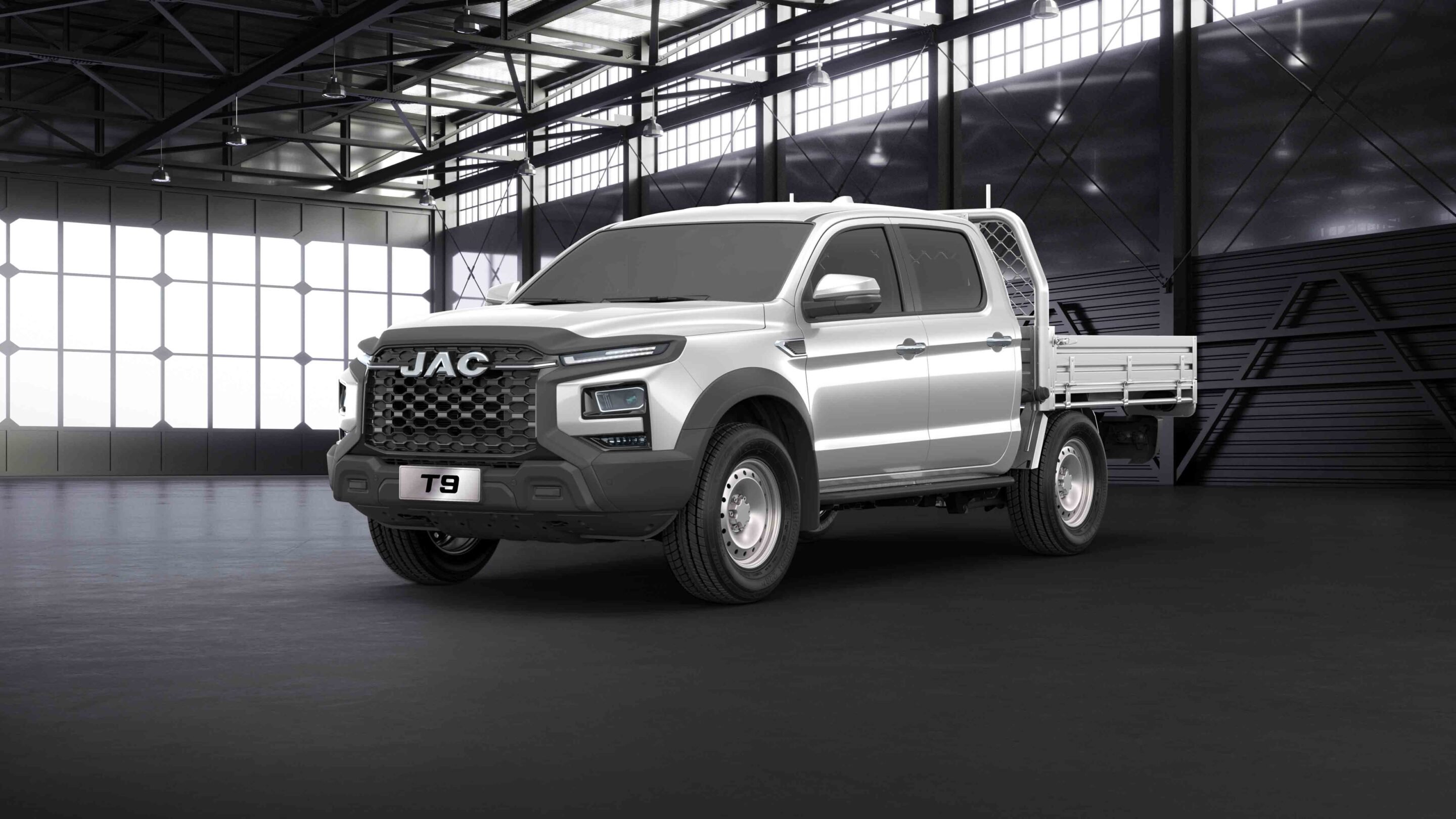
In addition, the Osprey X includes a black exterior styling package covering the grille, alloy wheels, roof bars, wing mirrors, door handles, and side-vent surrounds. Both Osprey variants have a 980kg payload, keeping them under the one-tonne novated leasing ceiling.
All four new models use JAC’s 125kW/410Nm 2.0-litre turbodiesel engine paired with a ZF eight-speed automatic transmission. The T9’s 4WD system includes a dual-range BorgWarner transfer case and a locking rear differential.
All models come with the JAC All Roads Assurance (JARA) package, which provides a seven-year unlimited kilometre warranty, 24/7 roadside assistance for seven years, capped price servicing, and a warranty loan vehicle program.
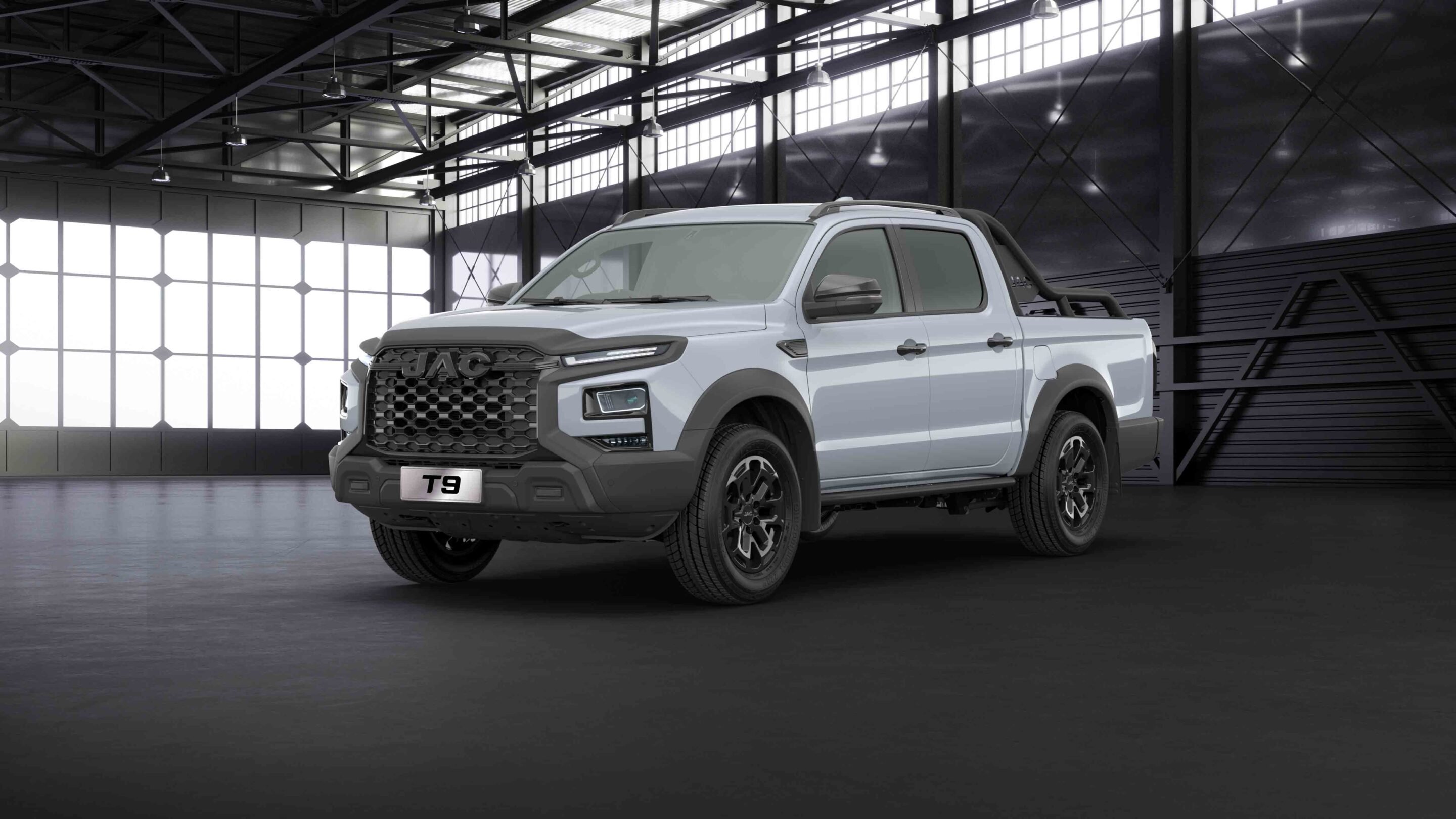
“The success of our T9 dual-cab 4×4 has shown that Australians appreciate the combination of safety, capability, reliability and great value that JAC delivers,” said Ahmed Mahmoud, JAC Motors Australia’s Managing Director. “These four fantastic new T9 family members expand the T9’s appeal for customers with specific requirements – whether that’s the ultimate work platform or a desire for enhanced daily comfort.”
The T9 is currently available in Australia in two variants: the base Oasis ($39,990) and premium Haven ($43,990). The T9 received a five-star ANCAP safety rating in 2024.